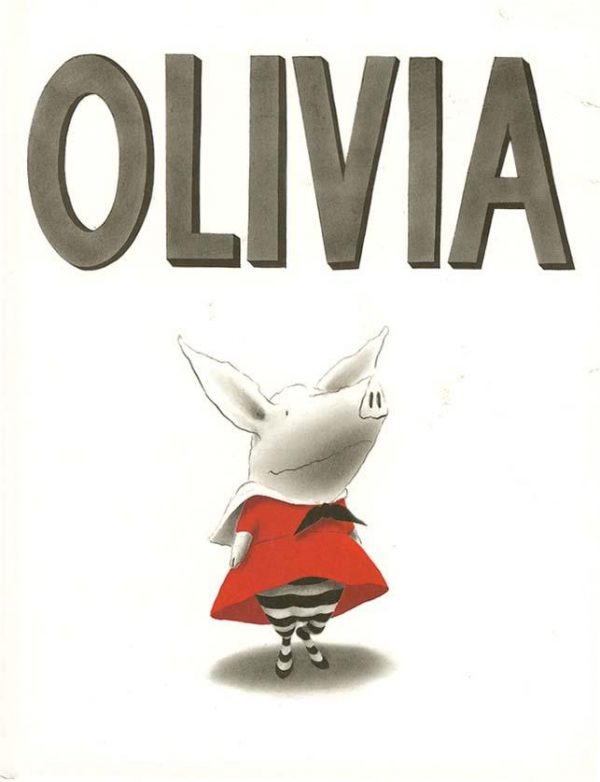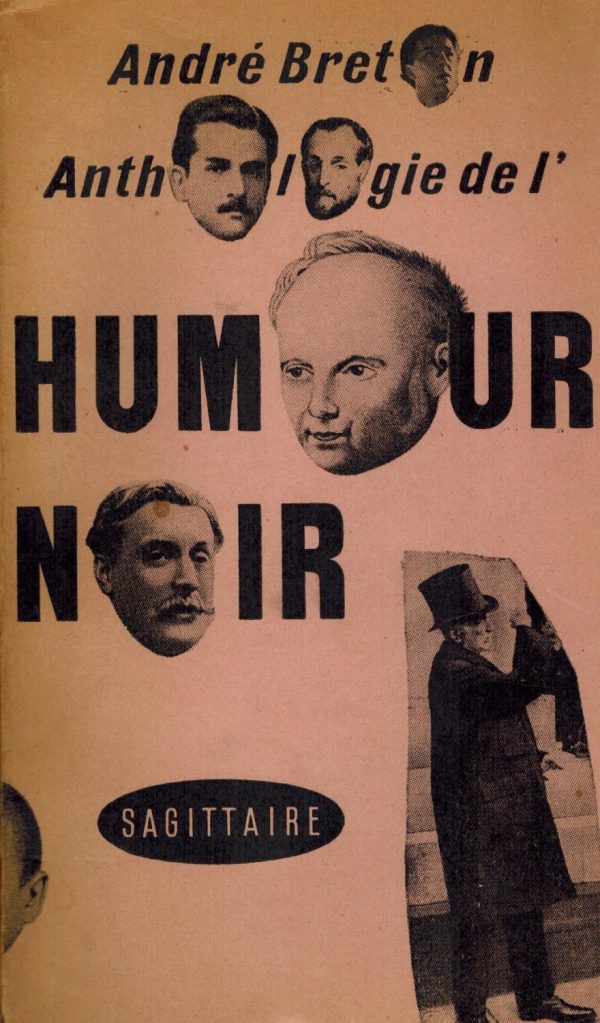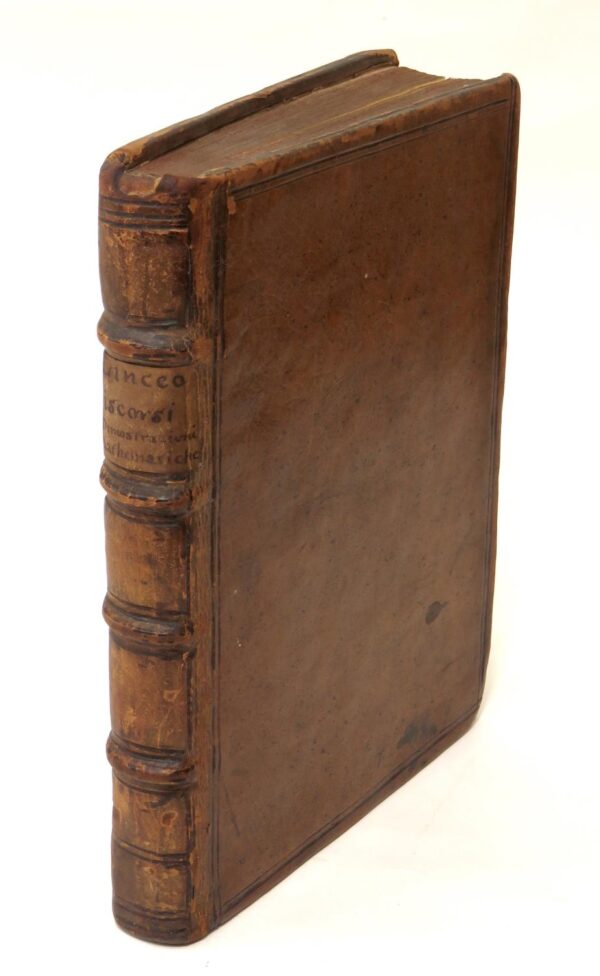
Discorsi e Dimostrazioni Matematiche, intorno à due nuove scienze Attenenti all mechanica & i movimenti locali . con une appendice del centro di gravita à d’alcuni solidi.
GALILEI, Galileo (1564-1642) 4to (190 x 137 mm), pp [viii] 306 [recte 314] [6], with numerous woodcut diagrams and illustrations in text; a very clean, crisp copy in untouched contemporary English blind-ruled sheep, paper label on spine, hinges slightly rubbed and small chip to head of spine. First edition of Galileo's most important work, the foundation of modern physics.This work was Galileo's 'greatest scientific achievement ? Mathematicians and physicists of the later seventeenth century, Isaac Newton among them, rightly supposed that Galileo had begun a new era in the science of mechanics. It was upon his foundation that Huygens, Newton and others were able to erect the frame of the science of dynamics, and to extend its range (with the concept of universal gravitation) to the heavenly bodies' (PMM 130). 'Unable to publish this treatise on mechanics in his own country because of the ban placed on his books by the Inquisition, he published it in Leyden. Considered the first modern textbook in physics, in it Galileo pressed forward the experimental and mathematical methods in the analysis of problems in mechanics and dynamics. The Aristotelian concept of motion was replaced by a new one of inertia and general principles were sought and found in the motion of falling bodies, projectiles and in the pendulum. He rolled balls down an inclined plane and thereby verified their uniformly accelerated motion, acquiring equal increments of velocity in equal increments of time. The concept of mass was implied by Galileo's conviction that in a vacuum all bodies would fall with the same acceleration. Newton said he obtained the first two laws of motion from this book' (Dibner).The book has a dedication to the Comte de Noailles, French ambassador to Italy, dated Arcetri, 6 March 1638, in which Galileo praised the publishers for their taste and skill. With all his writings banned by the Inquisition, Galileo had given the manuscript to De Noailles with instructions to have it published in Leiden by the Elseviers, to whom Galileo owed a debt of gratitude for the publicity given to his earlier writings, the Latin translations of the Dialogo and Letter to the Grand Duchess Christina published in 1635 and 1636.The binding is a typical 'cheap' English binding of the period, with no pastedowns, leaving the pasteboards showing.Provenance: eighteenth-century engraved Hopetoun bookplateCarli and Favaro 162; Cinti 102; Dibner 141; Evans 27; Horblit 36; Norman 859; Parkinson pp 80-81; PMM 130; Sparrow 75- $150,000
- $150,000
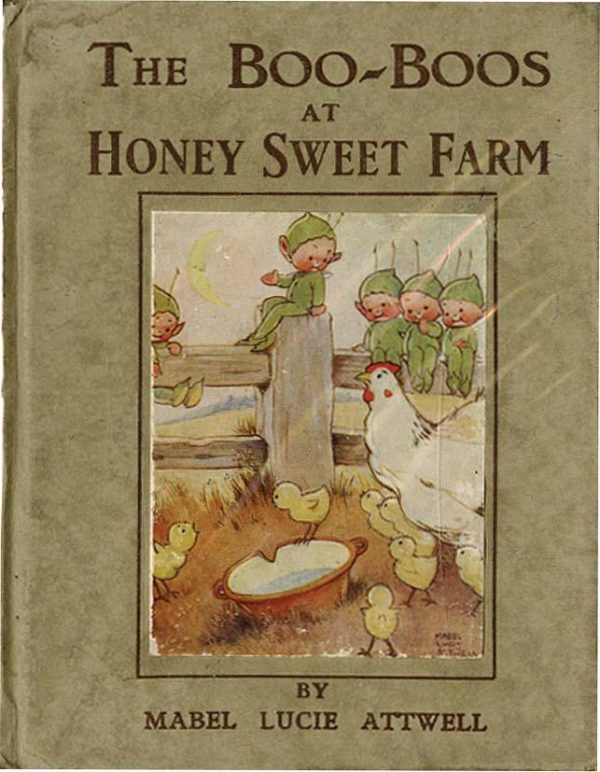
BOO-BOOS AT HONEY SWEET FARM
ATTWELL, MABEL LUCIE ATTWELL,MABEL LUCIE. THE BOO-BOOS AT HONEY SWEET FARM. Dundee, London, Montreal: Valentine, no date, circa 1921. 12mo (4 1/4 x 5 1/2"), boards, pictorial paste-on, slight shelf wear, VG-Fine. First edition. Illustrated by Attwell with pictorial endpapers, 14 color plates plus many full page and partial page green line illustrations all featuring a little girl named Bunty and Attwell's fairy Boo-Boos. Very scarce.- $1,100
- $1,100
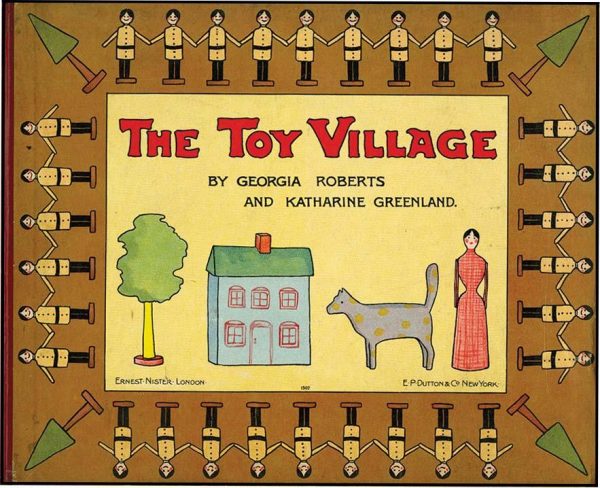
TOY VILLAGE
ROBERTS, GEORGIA PICTURE BOOK. THE TOY VILLAGE by Georgia Roberts. London & NY: Nister & Dutton, no date, circa 1906. Oblong 4to (11 1/4 x 9"), cloth backed pictorial boards, edges rubbed else VG+. This is a fabulous picture book with text in rhyme relating the tale of Noah and his crew after they came off of the Ark. Illustrated by Katharine Greenland with 20 full page chromolithographs portraying all of the characters as toys. See Peeps Into Nisterland p.281. This is a charming picture book.- $440
- $440
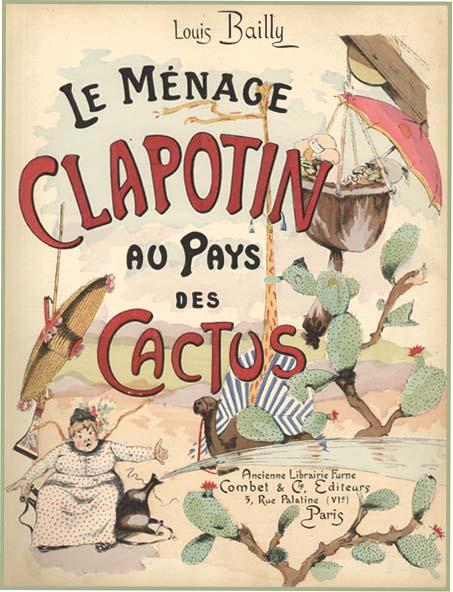
MENAGE CLAPOTIN AU PAYS DES CACTUS
BAILLY, LOUIS FRENCH. MENAGE CLAPOTIN AU PAYS DES CACTUS by Louis Bailly. Paris: Librarie Furne no date circa 1915. Folio, cloth backed pictorial boards, edges rubbed and new endpapers, VG. The adventures of Mr. Clapotin and his family when they travel to Tunis. Illustrated by noted artist Bailly with marvelous hand-colored illustrations throughout. See Dict. Des Illus. 1890-1945 p. 46-7.- $220
- $220
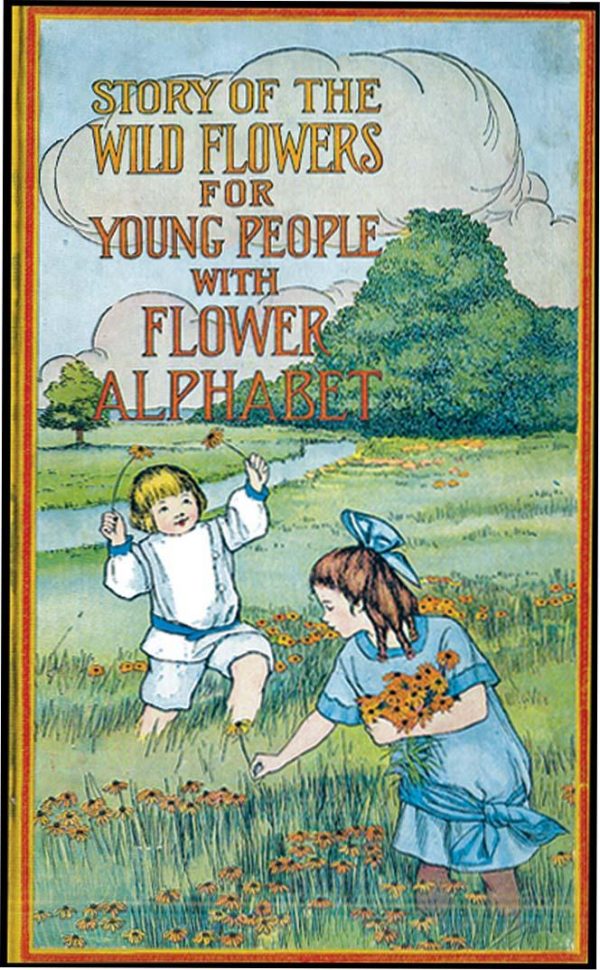
STORY OF THE WILD FLOWERS FOR YOUNG PEOPLE WITH FLOWER ALPHABET
KEELEY, GERTRUDE ABC. (FLOWERS) THE STORY OF THE WILD FLOWERS FOR YOUNG PEOPLE WITH FLOWER ALPHABET by Gertrude Keeley. NY: Hurst (1901, 1914). 4to (6 3/8 x 10 1/4"), cloth, pictorial paste-on, some slight cover soil else VG. Each of the 26 flowers from A-Z has 2 pages of text plus a poem, including some uncommon varities of flowers. Each letter is pictorially presented in color.- $165
- $165
![GRONNE SPILLEMAND [GREEN FIDDLER]](https://rarebookinsider.com/wp-content/uploads/2019/09/30422415003-600x446.jpg)
GRONNE SPILLEMAND [GREEN FIDDLER]
KALKAR (MOE,LOUIS)illus. DEN GRONNE SPILLEMAND [THE GREEN FIDDLER] by George Kalkar. Copenhagen: Henrik Koppels nd ca 1920's. Large obl. 4to, cl. backed pict. bds, light cover soil VG+. A fabulous book full of humanized insects, frogs and fairies. Illus., with 10 fine full page color plates and many detailed black and whites on text pages - similar to Elsa Beskow in style. A great picture book.- $220
- $220
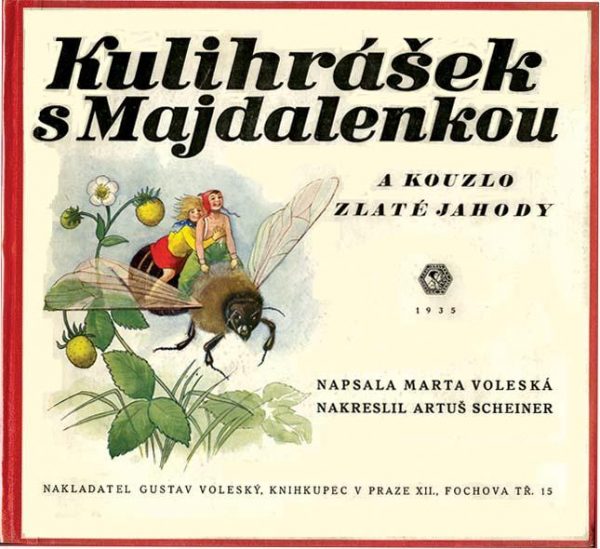
KULIHRASEK S MAJDALENKOU
VOLESKA, MARTA CZECHOSLOVAK. KULIHRASEK S MAJDALENKOU verse by MartA Voleska. Praze: Gustav Volesky 1935. Oblong 4to (10 3/4 x 9 3/4"), cloth, pictorial paste-on, slight bit of cover soil, VG+. This is the fantasy trip of two little children who shrink to the size of insects and have adventures with the insect world. Beautifully illustrated by noted Czech artist ARTUS SCHEINER with bold colors on every page. See Illus. of Children's Books v.1 p. 136, 145 for others by Scheiner.- $220
- $220
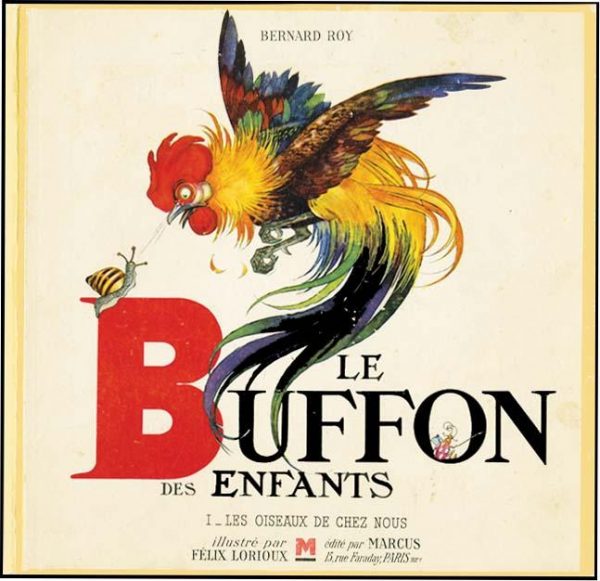
LE BUFFON DES ENFANTS: LES OISEAUX DE CHEZ NOUS
ROY, BERNARD (LORIOUX,FELIX)illus. LE BUFFON DES ENFANTS: LES OISEAUX DE CHEZ NOUS by Bernard Roy. Paris: Marcus (1946). Square 4to (10 x 10"), pictorial boards, slight edge rubbing, near fine. Featuring the most absolutely stunning full page color illustrations by Lorioux of birds (rooster, stork, owl, peacock, pelican etc.) accompanied by his detailed and humorous humanized animals and insects. Beautifully printed with rich colors including pictorial endpapers.- $330
- $330
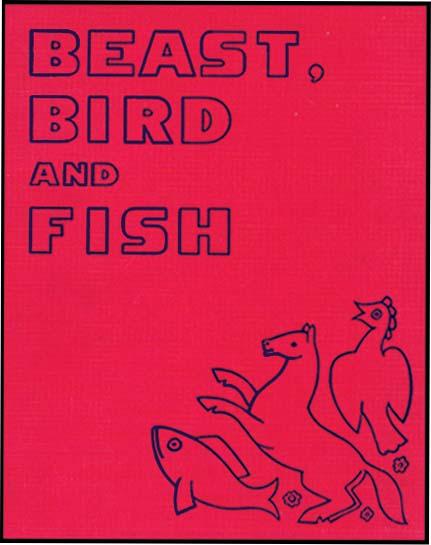
BEAST, BIRD AND FISH
MORROW, ELIZABETH MORROW,ELIZABETH. (D'HARNONCOURT,RENE) BEAST, BIRD AND FISH by Elizabeth Morrow. NY: Alfred A. Knopf 1933 (1933). 4to (8 1/4 x 13 3/4"), pictorial cloth, some cover soil else VG+, no dust wrapper. Stated 1st edition. This is an animal alphabet book with text presented in verse and including musical notation. Every letter has a very beautiful full page color illustration by RENE D'HARNONCOURT in his distinctive folk-peasant style and with his use of flat colors. A perfect alphabet book by the collaborators of the Painted Pig (Morrow was Anne Morrow Lindbergh's mother and wife of the American ambassador to Mexico). THIS COPY IS INSCRIBED BY ELIZABETH MORROW. Bader p.71. Very scarce.- $440
- $440
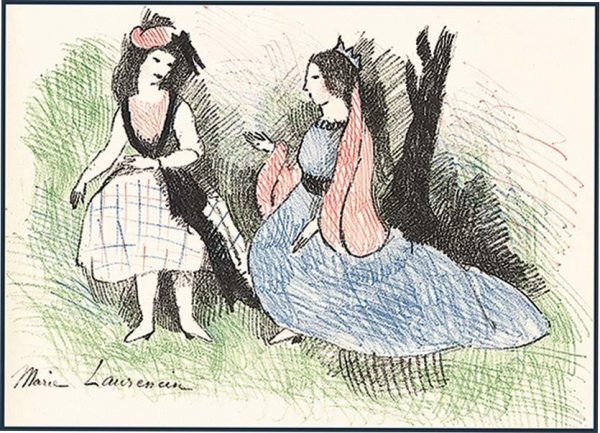
ALICE IN WONDERLAND
CARROLL, LEWIS CARROLL,LEWIS. (LAURENCIN) ALICE IN WONDERLAND. Paris: Black Sun Press 1930. Oblong 4to, white wraps, 114p., VERY FINE IN ORIGINAL GLASSENE, CHEMISE AND SLIPCASE (case scuffed with some minor wear and soil). LIMITED TO ONLY 370 COPIES FOR EUROPE, this is one of the 50 copies PRINTED ON JAPANESE VELLUM. Illustrated by MARIE LAURENCIN with 6 magnificent color plates. Quite scarce and a beautiful copy of a most desired book.- $5,500
- $5,500
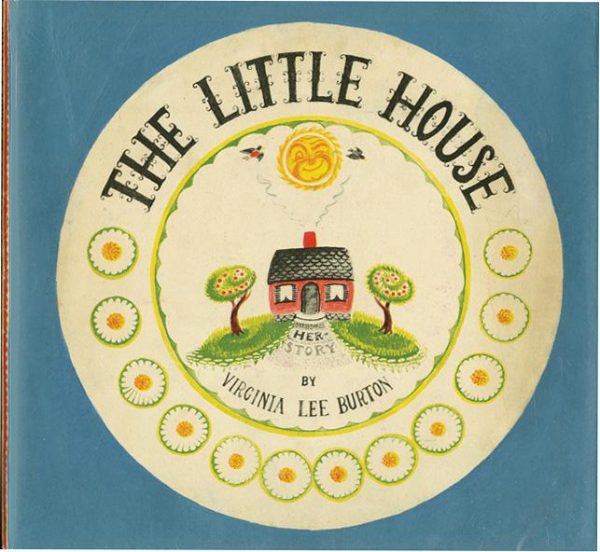
LITTLE HOUSE
BURTON, VIRGINIA LEE BURTON,VIRGINIA LEE. THE LITTLE HOUSE. Boston: Houghton Mifflin 1942 (1942). 4to (9 3/4 x 9"), pictorial cloth, Slight soil on top edge of cover else a clean, Fine copy in a fabulous dust wrapper (some practically undetectable small bits of restoration of dw). 1st edition (1st printing) of one of the rarest CALDECOTT AWARD WINNERS. and a children's classic. The story relates the conflict between an ever changing city life and tranquil country life, beautifully illustrated with color lithographs by Burton. See Bader p.201-2. Nice copies like this are very hard to find.- $12,650
- $12,650
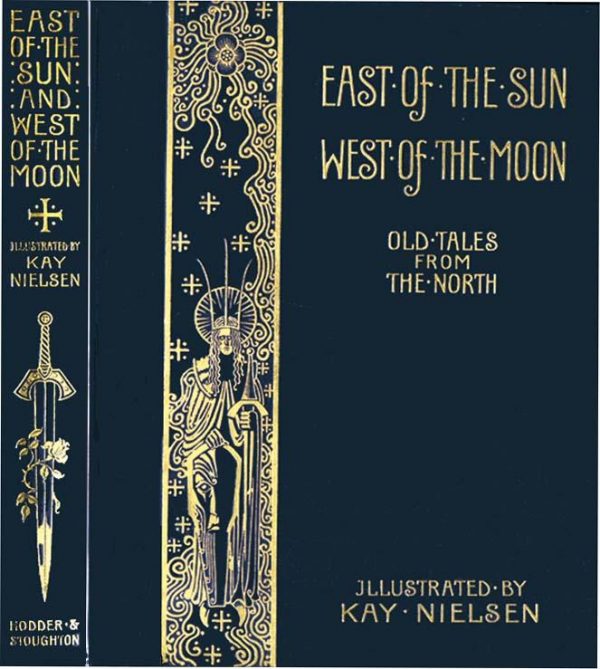
EAST OF THE SUN AND WEST OF THE MOON
(NIELSEN,KAY)illus. EAST OF THE SUN AND WEST OF THE MOON. [London] Hodder & Stoughton, no date [1914]. Large 4to, (9 x 11 1/2"), blue cloth with extensive gilt decoration - a Very Fine copy with gilt bright. 1st edition of Nielsen's most desired book, illustrated with pictorial endpapers and featuring 25 magnificent tipped-in color plates with lettered guards as well as numerous detailed black and whites throughout the text. A beautiful copy of the first edition.- $4,950
- $4,950
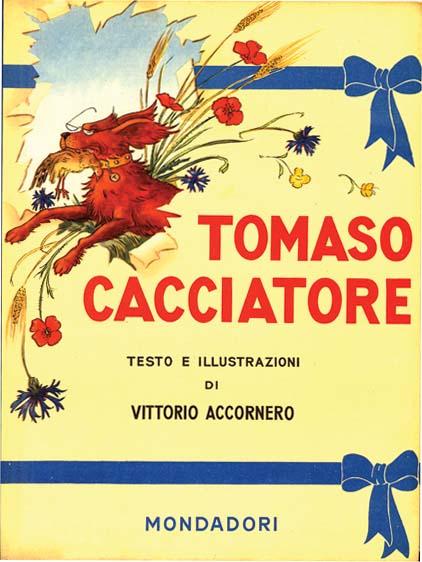
TOMASO CACCIATORE
ACCORNERO, VITTORIO ITALIAN. TOMASO CACCIATORE testo e illustrazioni di Vittorio Accornero. Arnaldo Mondadori (1950). 4to, cloth backed pictorial boards, near fine in dw with tape mends. A dog and bunny tale set at Christmas time and illus. by the author with wonderful full and partial page color lithos.- $165
- $165
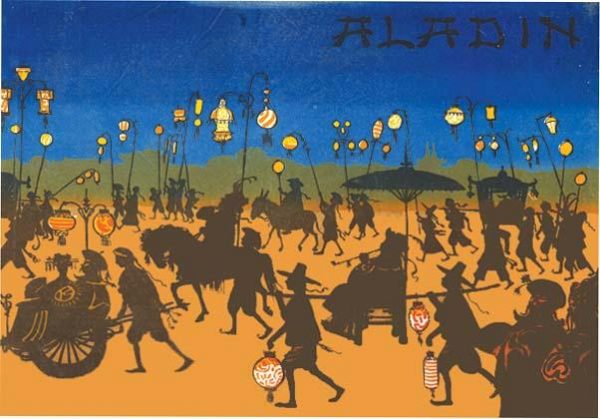
ALADIN: OMBRES CHINOISES EN QUINZE TABLEAUX
METIVET, LUCIEN ALADDIN. ALADIN: OMBRES CHINOISES EN QUINZE TABLEAUX poeme & images de Lucien Metivet. Paris: Flammarion (1904). Large obl. 4to, pict. boards, FINE IN PICTORIAL DUSTWRAPPER! Music for a theatrical production of Aladin is provided by Jane Vieu. The book is illustrated with magnificent, richly colored lithographs by LUCIEN METIVET - both full and partial page. The style and images are Chinese. This is a beautiful copy, rare in the pictorial dustwrapper which has served to preserve the pictorial cover. See Dictionaire des Illustrateurs 1800-1914 p.694 for entry on Metivet. A great picture book.- $550
- $550
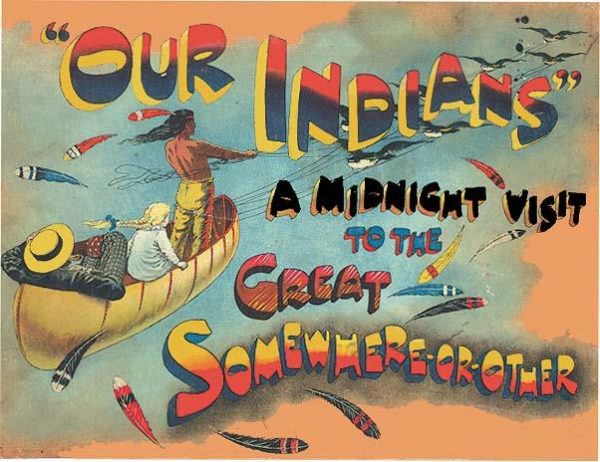
OUR INDIANS: A MIDNIGHT VISIT TO THE GREAT SOMEWHERE-OR-OTHER
BRADLEY, LUTHER DANIELS BRADLEY,LUTHER DANIELS. OUR INDIANS: A MIDNIGHT VISIT TO THE GREAT SOMEWHERE-OR-OTHER. [NY]:Dutton 1899. Oblong large 4to, cl. backed pictorial boards, edges lightly rubbed light wear to front endpaper else a near fine, tight clean copy of this rare book. With text written in verse, the story is a dream fantasy trip taken by a little girl and boy (the girl based on Bradley's niece). They slip out at night in a flying canoe guided by an Indian who takes them to a quiet land of peace and harmony. Featuring striking full page chromolithographs (16 full page and 5 double page) - the artwork by Bradley as well. Luther Daniels Bradley, educated at Yale, was an editorial cartoonist for the Chicago Daily News. In Image and Maker p.26-36 Helen Borgens notes : "Our Indians is a personal dream vision. Bradley depicted the Indians as expressing the qualities inherant in all human beings." yet he juxtaposed this realism with absurd images of Indians serving tea in china cups or performing a vaudeville act with band instruments to celebrate a victory. It is the combination of real and surreal that gives this book its unique quality. About the artwork, Borgens says that "the symmetry of individual illustrations reinforces the symmetry of the entire book." Altogether a wonderful book, quite rare and when found it is usually in terrible condition.- $1,320
- $1,320
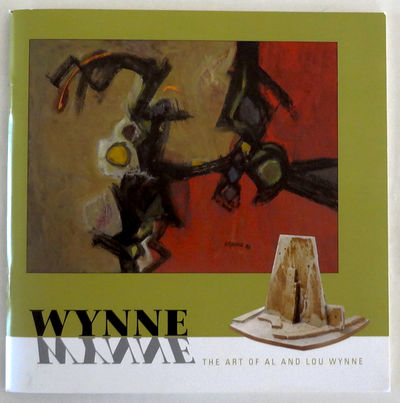
Wynne. The Art of Al and Lou Wynne
Felix, Tracy. Co-Curator Denver, 2008 Denver: Kirkland Museum of Fine & Decorative Art, 2008. First Edition. Staplebound wraps. Very good. Catalog of the exhibition of fine art and pottery by Al and Lou Wynne held at the Kirkland Museum of Fine Art, Denver from Oct. 1, 2008 through Jan 4, 2009. Stapled pictorial wraps. 8" x 8" 56pp. Very good condition. Al Wynnes work has been featured in major exhibitions from Colorado to Washington D.C., south to Texas and north to Alaska. His work has been presented in both individual and group shows. Paintings, calligraphy, and sculptures are held in museums and in private collections around the world. Al was listed in Whos Who in American Art starting in 1959. In June 2013, the majority of Al's life's work was destroyed in the Black Forest Fire. All that remains are pieces held by the family and in collections.- $125
- $125
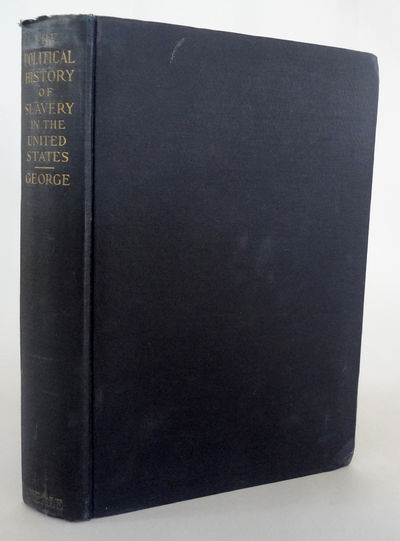
Political History of Slavery in the United States.
George, James Z. New York, 1915 New York: The Neale Publishing Company, 1915. First Edition. Hardcover. Very good. 8vo. Dark blue cloth with title, author and publisher in gold on the spine. This copy presented to his friend Col. Dillingham by William Hayne Leavell, United States Envoy Extraordinary Guatemala, who wrote the books foreword and financed its publication. Laid in is a handwritten letter from Leavell to Dillingham on paper embossed "Legation of the United States of America".Very good with minor foxing to last few pages and light shelf wear to cover.- $400
- $400
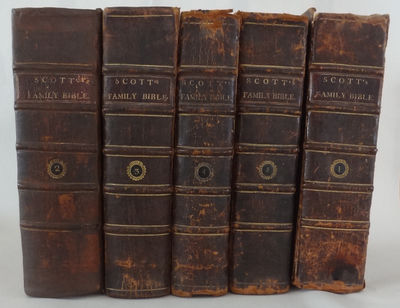
The Holy Bible Containing The Old and New Testaments, with Original Notes, Practical Observations, and Copious Marginal References
Scott, Thomas Philadelphia, 1804 Philadelphia: William W. Woodward, 1804. First American Edition. Full leather. Good. First American, From the Second London Edition. Complete in five volumes, with original cloth backed map accompanying the five. Contemporary full leather with five raised bands and dark red lettering piece to spines. Contains family history of the Thompson - Howell family of New York. Covers a little rubbed. Some toning and occasional foxing. A half page of family history excised. Hand colored "Map of Palestine or Holy Land from the Best Authorities" Engraved for Whiting & Watson's edition of Dr. Scott's Bible by Peter Maverick, Newark shows toning with some foxing.A fine example of a very early American printed Bible.- $1,250
- $1,250
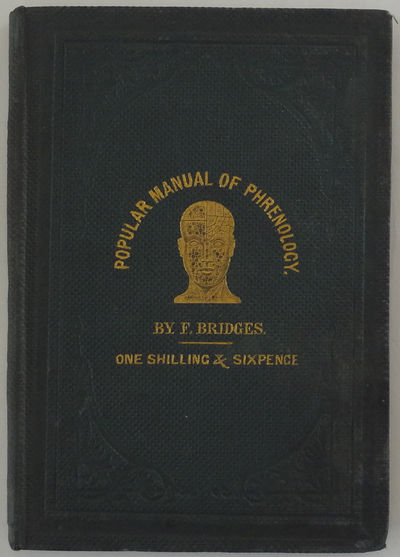
Popular Manual of Phrenology
Bridges, Frederick London, 1860 London: George Philip and Son, 1860. First Edition. Hardcover. Good. Small 8vo. 96pp. Green pictorial embossed cloth over boards. Light tanning throughout and old stain to rear end papers.A seemingly scarce volume on phrenology, a pseudo-medicine primarily focused on measurements of the human skull, based on the concept that the brain is the organ of the mind, and that certain brain areas have localized, specific functions or modules. Although both of those ideas have a basis in reality, phrenology extrapolated beyond empirical knowledge in a way that departed from science.- $100
- $100
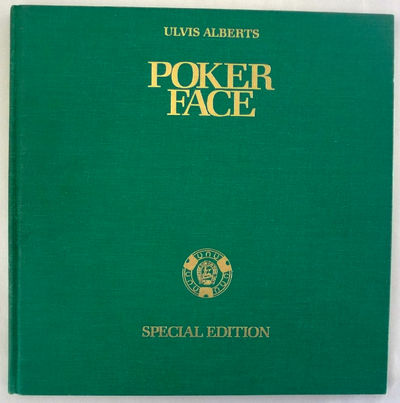
Poker Face
Alberts, Ulvis Hollywood, 1981 Hollywood: Angel City Books, 1981. Limited Edition. Hardcover. Good. Special edition number 80 of 500 boldly signed by Alberts. Large square quarto hardcover. Gilt stamped green cloth with matching slip case. Book in very good condition with a little rubbing to spine. Slip case mottled and partially split on two edges. In the 1970's, there was only one tournament game the professional gamblers waited for all year and that was the "World Series of Poker" at Binion's Horseshoe casino in downtown Las Vegas. Alberts photographs of these events and his candid pictures of legendary players, including Johnny Moss, "Amarillo Slim" Preston, Stu Unger, Jack "Treetop" Strauss, Doyle Brunson, Benny Binion and many others, form the story of those iconic early years.- $2,000
- $2,000
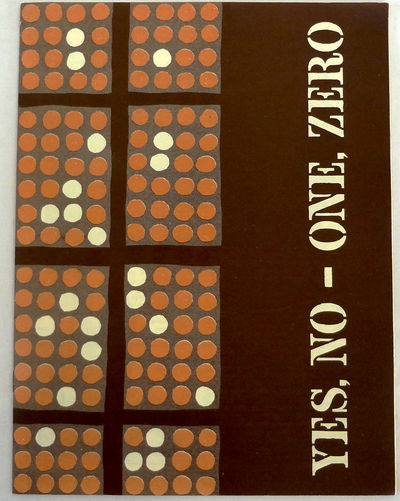
Yes, No – One, Zero
Esso Standard New York, 1958 New York: Esso Standard, Division of Humble Oil & Refining Company, 1958. First Edition. Staplebound wraps. Near fine. Staple bound wraps. 15pp paginated in binary number system 0010 to 1111. 10 1/2" by 8". Fine condition.Prepared by the publisher for teachers in the nine states that Esso had offices this booklet provides an explanation of the binary system as a language for early computers and also asks questions such as "What are these devices? In what sense do they think? Will they replace the human brain? A fascinating glimpse into early electronic computer technology.- $125
- $125
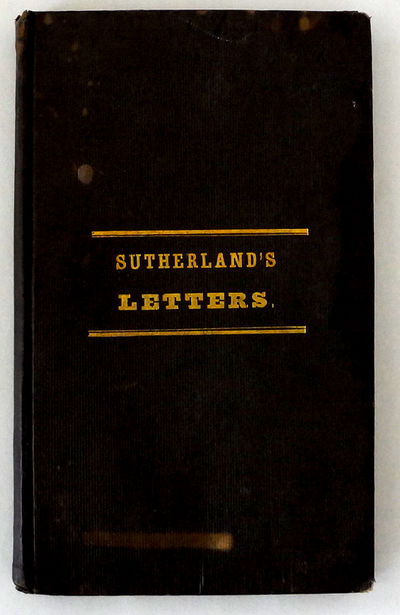
A Letter to her Majesty the British Queen
Sutherland, Th. Jefferson Albany, 1841 Albany: Printed by C. Van Benthuysen, 1841. First Edition. Hardcover. Good. New York imprint concerning the Canadian Rebellion, noted for it's index of captive patriots imprisoned at Van Dieman's Land. 168pp in gilt titled brown cloth binding, areas of fade, lightly foxed endpapers showing dampstain. Otherwise neat, tidy.- $1,250
- $1,250
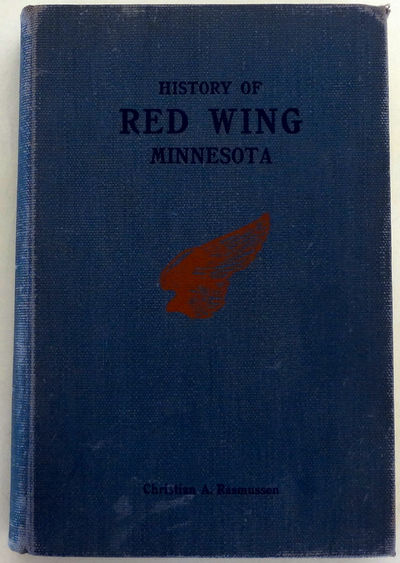
A History of the City of Red Wing Minnesota
Rasmussen, Christian A. Red Wing, Minnesota, 1934 Red Wing, Minnesota : Red Wing Advertising Co, 1934. First Edition. Hardcover. Very good. 8vo [viii] 296pp + 16 plates. Blue cloth with dark blue lettering end red design. Previous owner's name to front free end paper otherwise clean throughout. Tight binding. Some wear to cover with some rubbing to spine.- $125
- $125
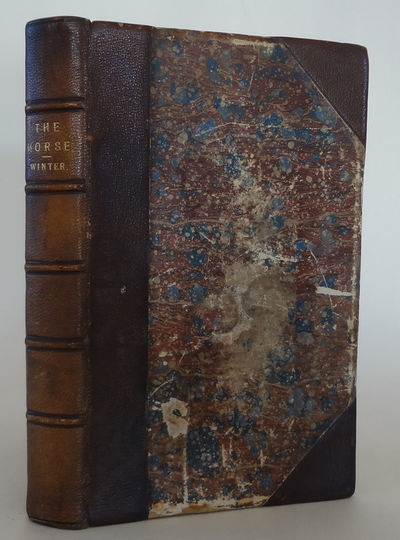
The Horse in Health And Disease; or, Suggestions on His Natural and General History, Varieties, Conformation, Paces, Action, Age, Soundness, Stabling, Condition, Training and Shoeing With a Digest on Veterinary Practice.
Winter, James W. London, 1846 London: Longman, Brown, Green, and Longmans., 1846. First Edition. Hardcover. Good. Quarter bound brown leather over marbled boards. 8vo. Frontispiece [viii] pp 376 with nine b/w plates and one color plate. The author, James W. Winter was a member of the Royal College of Veterinary Surgeons, and of the Association Litteraire D'Egypt and late Veterinary Surgeon to Mehmet Ali and Ibrahim Pasha.Overall good condition with some wear to the boards and light moisture marks to the plates. Two page corners professionally repaired. back free endpaper excised.- $500
- $500
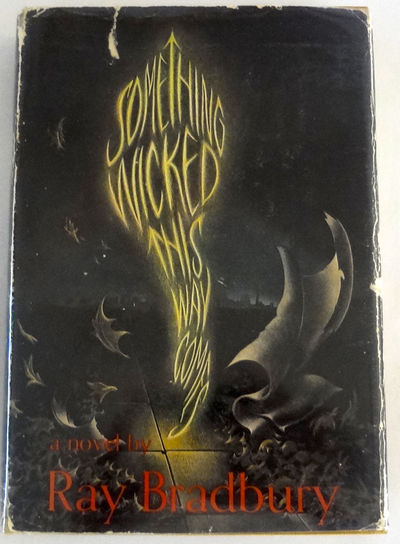
Something Wicked This Way Comes
Bradbury, Ray New York, 1962 New York: Simon and Schuster, 1962. First Edition. Hardcover. Very good/fair. Stated 1st printing. Mustard colored boards with black lettering. Red top stain. Book in very good condition. Dust jacket shows heavy wear to edges with some closed tears. Original $4.95 price present.- $300
- $300
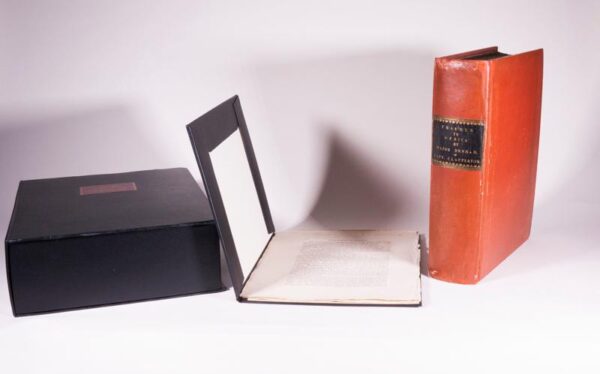
Narrative of Travels and Discoveries in Northern and Central Africa, in the Years 1822, 1823 and 1824, by Major Denham, Captain Clapperton and The Late Doctor Oudney, Extending Across the Desert to the Tenth Degree of North Latitude, and from Korika in Bornou, to Sackatoc, The Capital of The Fellatah Empire. With and Appendix.
Denham, Dixon and Clapperton, Hugh London: John Murray, 1826. 1st Presentation Edition, Signed. Royal 4to -- 29.4cm. [lxviii], 336pp., [iv], 272 pp., Appendix. Two volumes in one. Original Tuscan-red boards, spine with a fine contemporary black morocco label, tooled and titled in gilt; with 37 fine engraved and etched plates, charts and maps, and one large fold-out map, of which 35 full-page plates are on India paper, mounted and, of which 28 are also present in 2nd state for a total of 63 plates in all, comprising a Proof State Before Letters, and also on India paper, mounted, wood-engraved illustrations. Binding is professionally re-backed with old spine laid down, inner hinges restored. Now contained in a specially constructed black solander box with integral flap-case -- NB: As a result of a binders error, this copy was bound without four leaves (signature C of Volume II) and noted at the time on the original incorrectly bound signature in a contemporary graphite hand: This is a mistake. These have been supplied from another copy of the first edition. A Very Good copy of the one of the most sought after issues of this masterpiece of African travel. Presentation Copy of the First Edition inscribed on the front free-endpaper, John Major from the Publisher. Lowndes: The most interesting and important work yet published on the subject of African researches. It is written in a plain and perspicuous style, and containing many particulars of an hitherto unknown country. This, one of very few copies printed upon thick paper for presents only. According to Lowndes, there were 2 lesser issues of the first edition: the regular issue; a special issue, with the plates mounted on India paper; and third issue for presents only (op.cit.) the issue that is listed here, which has the plates mounted on India paper. The engravings, after original drawings by Denham and Clapperton, are superbly engraved by Edward Finden, one of the finest steel-engravers in England at the time. Denham and Clapperton, in the company of Dr. Walter Oudney, travelled from Benioleed, near Tripoli, almost due south to Lake Tchad, with excursions in the mountains west of Mourzuk in Fezzan. Dixon attempted to follow the circuit around Lake Tchad but was unsuccessful. In the meantime, Clapperton and Oudney journeyed west from the lake toward the Niger River, but the doctor only made it about a third of the way, and died in Murmur. Clapperton continued west, but was prevented from passing beyond Sackatoo by the local Sultan. He and Dunham subsequently returned to Tripoli and crossed back to England. This exciting narrative is compiled from Denhams journal, with a chapter by Dr. Oudney on the excursion to the mountains west of Mourzuk. A final section by Clapperton relates to the westward journey form Lake Tchad to Sackatoo and includes an account of Oudneys death. Among the several appendices are translations from the Arabic or various letters and documents brought back by Denham and Clapperton, including a document relating to The Death of Mungo Park; a translation from Arabic of A Geographical and Historical Account of The Kingdom of Tak-roor, from a larger work composed by Sultan Mahommed Bello of Hausa; Vocabularies of Bornou, Begharmi, Mandara and Timbuctoo; appendices on the Zoology and Botany of the Regions based on samples collected by Dr. Oudney; a note on Rock Specimens; and a Thermometrical Journal kept at Kouka in Bournou. -- Lownnes I p. 629, Howgego D18 Vol. II.- $3,800
- $3,800
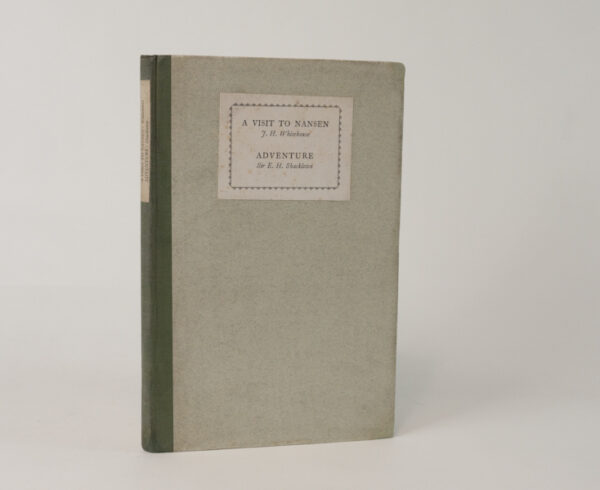
Adventure & A Visit to Nansen: Essays by Ernest Shackleton & Fridtjof Nansen
Whitehouse, JH London: Oxford University Press, 1928. 1st Edition. Adventure by Ernest Shackleton & A Visit to Nansen. 8vo, 22.7cm, [2], 23pp [5]. In Near Fine publishers green cloth backed boards with green cloth back strip, upper cover and spine with publishers paper labels lettered in black, two portrait front pieces. Uncut page edges. Near Fine condition internally with tight un-cracked hinges and no prior ownership markings. Scarce. This unique copy is signed by JH Whitehouse on a private library label inside the front cover. Spence 1255; Taurus 132; Renard 1691; Rosove 1343. The significance and importance of this publication to Antarctic exploration lies in the article by Ernest Shackleton entitled Adventure where he describes the spirit that moved him to explore. A well-written and interesting pair of essays by two of the most notable and accomplished polar explorers in the 19th and 20th centuries.- $450
- $450
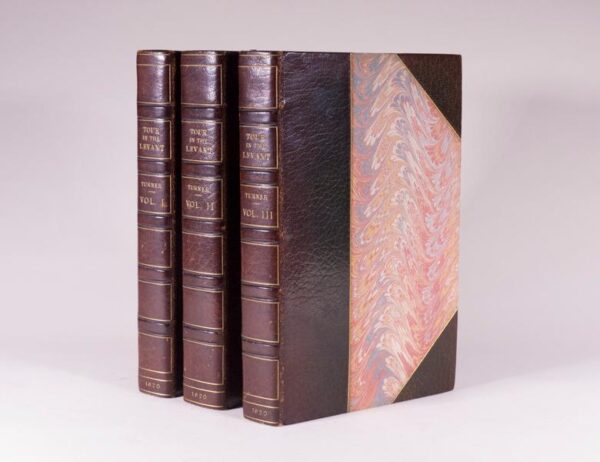
Journal of a Tour in the Levant
Turner, William Esq. London: John Murray, 1820. First Edition. Complete in 3 volumes. 8vo 22.7cm. 22 engraved plates of which 6 are hand-coloured aquatints - 2 of which are fold-out panoramas and one being a double-sided facsimile, 2 fold-out engraved maps, illustrations in text. All half-titles and coloured frontis piece plates are present. Volume I: [xxiii], (2), 408pp. (1); Volume II: [vi], (1), 608pp - incl. Appendix; Volume III: [vi], (1), 546pp incl. Index, (1-Errata), (1). Later half burgundy morocco with marbled boards and matching marbled end leaves, top page edges gilt, spines with five compartments ruled in gilt with bright gilt titles. Bound by Worsford. A very attractive set inside and out. Near Fine+ and complete. Scarce. First edition of this important work, which contains the accounts of several journeys, not consecutive. Turner spent five years in the Levant with this being a fascinating record of the Levant in the early nineteenth century. Turner's travels, while he was attached to the British embassy at Constantinople, took him to Egypt, the Holy Land, Albania, Greece and numerous Greek islands, as well as Turkey. The plates show costumes and antiquities, as well as views of Smyrna, Patmos and Pergamus. Atabey 1251, Blackmer 1687, Weber 94.- $7,500
- $7,500
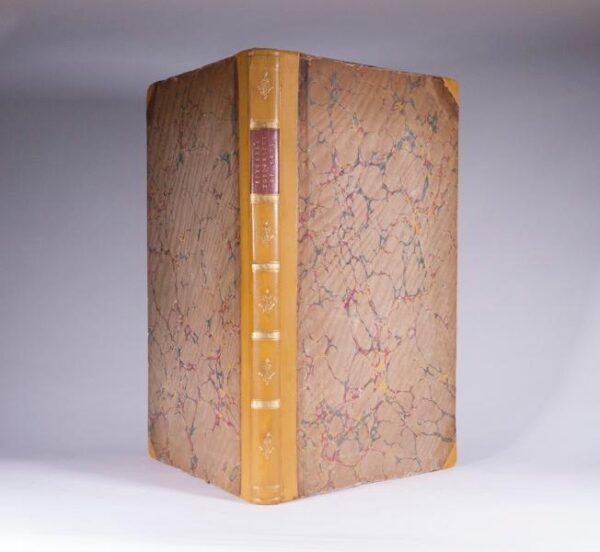
Topography of Troy, and Its Vicinity Illustrated and Explained by Drawings and Descriptions. Dedicated by Permission, to her Grace The Duchess of Devonshire.
Gell, William Inscribed and Signed by Lord Byron. London: C. Whittingham, for T.N. Longman and O. Rees, 1804. First Edition. Folio 43.5cm. (iv), 124 pp. Title leaf with hand-coloured engraved vignette, dedication leaf, 28 hand-coloured plates including 3 fold-out plates and 2 hand coloured maps, 13 engravings in the text, all but 2 coloured -- the entire sequence numbered 1--45, one unnumbered plate at page 21. ¾ tan calf with red morocco spine label and bright gilt decorations on spine. A lovely and complete copy in Near Fine Condition. Rare. The production of this very handsome folio was intended to provide accurate illustrations of the scenery covering the whole region of Troy. William Gell visited the Troy in December, 1801 during his first trip to Greece. He used a camera lucida (an instrument in which rays of light are reflected by a prism to produce on a sheet of paper an image, from which a drawing can be made) to produce in a very short time extremely accurate small-scale sketches of vast landscapes and scenes. The final production of this very handsome folio with its forty-five plates was meant to supply accurate illustrations of the scenery covering the whole region of Troy. This is a very impressive publication. Travel, 399. Blackmer Library 660. Certainly the most beautiful book on Troy ever printed --A.K. Lascarides, The Search for Troy, 1553-1874, 1977 Inscribed and Signed by Lord Byron on the verso of the second blank front free leaf reading: Sir William Gells Topography of Troy cannot fail to insure the appreciation of every man possessed of a classical taste as well for the information. Sir W. conveys to the mind of the reader as for the ability & research the works display. Ld. Byron- $7,000
- $7,000
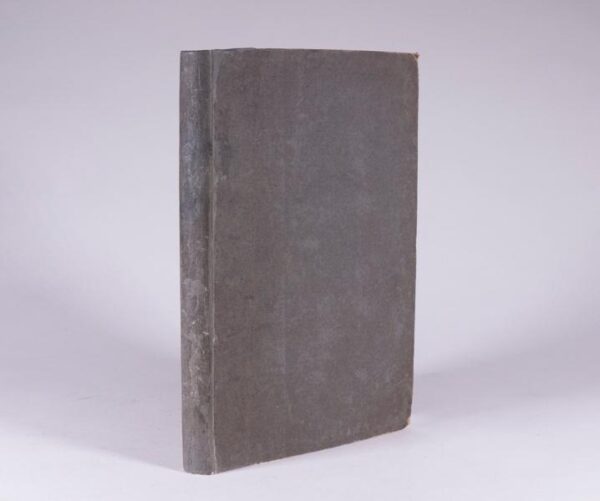
The Importance of the Cape of Good Hope, As a Colony to Great Britain, Independently of the Advantages it Possesses as a Military and Naval Station, and the Key to Our Territory Possession of India.
Fisher, Richard Barnard London: T. Cadell and W. Davies, 1816, First hardbound edition. 3rd (and best) edition with additions. 8vo 22.7cm. [xxiv], 190 pp. Fold-out hand-colored aquatint frontispiece, fold-out hand-colored plan in outline. Original boards re-backed with original spine laid down and original endpapers. A very clean and complete copy with no foxing and pages untrimmed. The first two editions of the work were issued in pamphlet form, and the present volume possesses additions to the letterpress of earlier productions. Fisher was of the opinion that the Hottentots had no language and that the few words they pronounced were either Portuguese or Dutch. Fisher complains that there were no taverns, hotels, or even shops in Cape Town, and draws a by no means favorable picture of it inhabitants, who he says, have a most inordinate sense of pride while they seem to pride themselves on their dexterity in imposition, and none suffer so much from it as English military and navy. He also quotes Barrow as saying that the inanity of their minds and the indolent habit of their bodies are not even surmounted by self-interest, and reference is made to the extreme brutality displayed by the Africans (Afrikanders) to their slaves. There is an article on the wines of the colony, and others having reference to the trade in dried fruits, ostrich feathers, ivory, &c. Under the title Further Considerations, many suggestions are made for the betterment of the government of the colony Mendelssohn Volume 1. Pp. 547.- $3,500
- $3,500
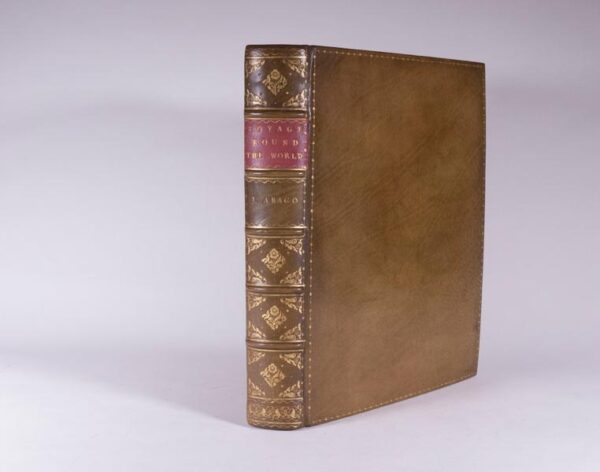
Narrative of a Voyage Round the World, in the Uranie and Physicienne Corvettes, Commanded by Captain Freycinet, During the Years 1817, 1818, 1819 and 1820; on a Scientific Expedition Undertaken By Order of the French Government, in a Series of Letters to a Friend
Arago, Jacques London: Treuttel and Wurtz, Treuttel, Jun. and Richter. 1823, First English Edition. Quarto 27.5 cm. 2 parts in 1, fold-out frontispiece map and 25 lithograph plates -- complete; later full-tan calf with gilt decorative ruled border on front and rear boards, spine with five raised bands, bright gilt decorative compartments and fuchsia morocco title label. Despite the clear evidence of the 'Directions for placing the Plates' present here, there has been some unnecessary confusion about the collation of this book. Ferguson omitted the map from his plate count, while Hill erroneously called for a map and 26 plates. This very clean copy, with the map and 25 plates is complete and in Near Fine+ condition. The first edition in English of this private narrative of the 1817-1820 Freycinet expedition to Australia and the Pacific - in fact the first appearance in English of any account of the voyage. Originally published in French, Arago's book in its many subsequent editions became one of the voyage best-sellers of the nineteenth century. The English edition is much rarer than the French edition. The very large multi-volume French account of the voyage was far more serious and scientific in tone. Arago was the official draftsman on the voyage, and the excellent lithograph plates here are all after Aragos drawings. WITH: A 3-page letter written and signed by Arago dated 8 April 1842 to Minister M. Piobert discussing the voyages of Dumont Durville and La Place. The Uranie with a crew of 125 men under the command of Captain Louis de Freycinet, entered the Pacific from the West to make scientific observations on geography, magnetism and meteorology. Arago was the artist of the expedition which visited Western Australia, Timor, Hawaii and New South Wales. The original ship wrecked off the Falkland Islands. Two months later, the expedition continued aboard the Physicenne which stopped for a time in Rio de Janeiro. Captain Freycinets wife, Rose Pinon, was smuggled on board at the advent of the voyage and made the complete journey, causing some discord among the crew. Freycinet named an island he discovered after her Rose Island among the Samoa Islands. These entertaining letters, written in a lively and witty literary style, provide vivid descriptions of the topography and the inhabitants of the Pacific Islands. The book achieved great success. Hill 28-29.- $8,500
- $8,500
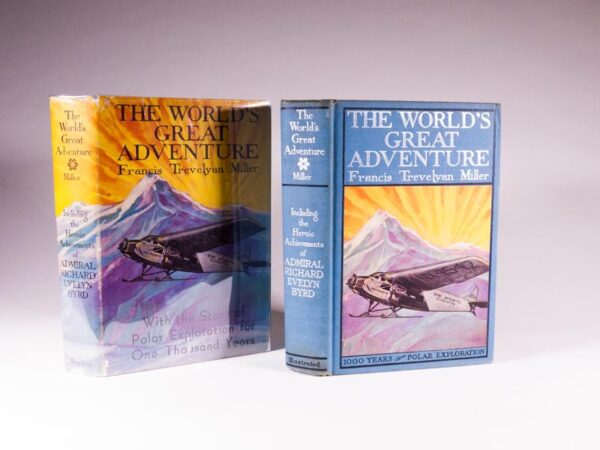
The World’s Great Adventure 1000 Years of Polar Exploration – Including the Achievements of Admiral Richard Evelyn Byrd. with Forewords by General A.W. Greely and Dr. Henry Fairfield Osborn. Signed by Lawrence Gould and John OBrien
Miller, Francis Trevalyan, LL.D., Litt.D. Philadelphia, Chicago and Toronto: The John C. Winston Company, 1930. 1st Edition. 8vo 22.4cm. 384pp. Flights for the Top of the World and detailed Chronology of Explorations at the rear; illustrated with a colored frontispiece and black-and-white photographs and drawings. Publishers blue cloth with colored cartographic end leaves of the north and south polar regions. Silver tiles and color image on front cover are bright, spine silver also bright; very light wear to extremities. A Near Fine and complete copy in a lovely unclipped dust jacket in Very Good condition. This unique copy is signed twice. On page 63, the full-page black-and-white photographic plate of Lawrence Gould is signed by him. Gould was second in command of Byrds expedition and served as expedition geologist. On page 76, the full-page photographic plate of John OBrien is signed by OBrien. He served as chief surveyor and Assistant to Admiral Byrd on the Byrd Antarctic Expedition. The book presents a well-researched history of polar expeditions, by Admiral Byrd and many others.- $200
- $200
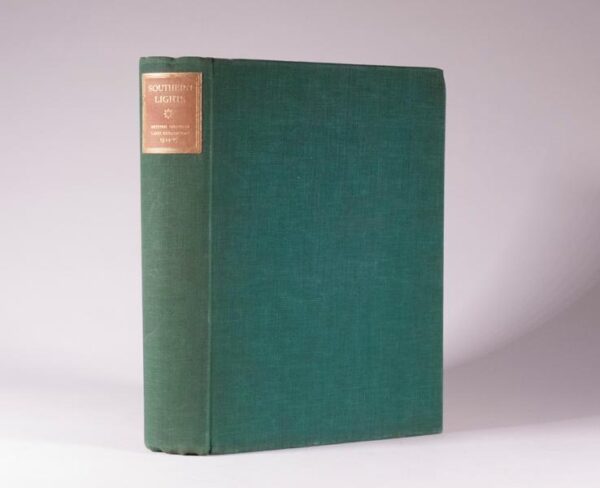
Southern Lights: The Official Account of the British Graham Land Expedition 1934-1937 — Signed by John Rymill
Rymill, John London: Chatto and Windus, 1938. First Edition. 4to 25.8cm. [xv], 296pp., frontispiece plus 121 excellent sepia toned photographs, three fold-out maps with color, several full-page maps -- some in color, one large fold-out color map at rear -- complete. A Near Fine copy in publishers green cloth covered boards with bright gilt title label on spine. Internally in Fine condition with tight un-cracked hinges and no prior ownership markings; no foxing, inscriptions, folds or tears. Exterior is Near Fine with no wear to edges or corners of original green cloth. A well-preserved complete copy in Near Fine condition. This unique copy is signed and inscribed by John Rymill on the front free end leaf. Conrad 296; Spence 1016. Rosove 226.A1.c Southern Lights is a well-written first person narrative of an important expedition establishing that Graham Land, in the Weddell Sea, was part of the Antarctic Continent and not an archipelago. Containing two chapters by A. Stephenson and a historical introduction by Hugh Robert Mill. The British Graham Land Expeditions objectives were simple: experience the adventure of polar living, matching danger and daring while exploring Graham Land by ship, sledge and airplane". This book is an interesting and good read with excellent sepia images and maps.- $750
- $750
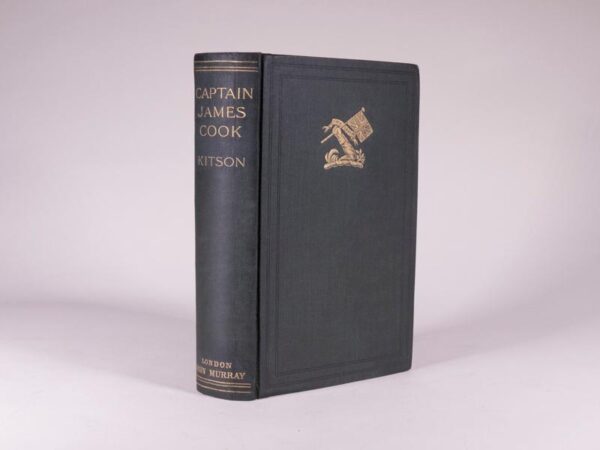
The Life Of Captain James Cook: The Circumnavigator — Signed twice & Inscribed by Kitson
Kitson, Arthur London: John Murray, 1911. First Edition. Large 8vo cm. 334pp., Appendix, Index, Publishers Ads at back; b/w photographic illustrations + fold-out colour map; internally in Very Good condition with only beginning intermittent foxing, minor professional restoration at spine extremities.An excellent copy of a Scarce publication. Rosove 192.A1 This most unique copy is signed and inscribed by Arthur Kitson on the half-title page. Also included is Kitsons inscribed business card mounted on the front free end leaf. Kitson presents an accurate chronology of Cook's career on the Eagle, Pembroke, Northumberland, Endeavour and Cooks 2nd and 3rd Pacific voyages. A very well-research book and most difficult to find in the 1st UK Edition.- $850
- $850
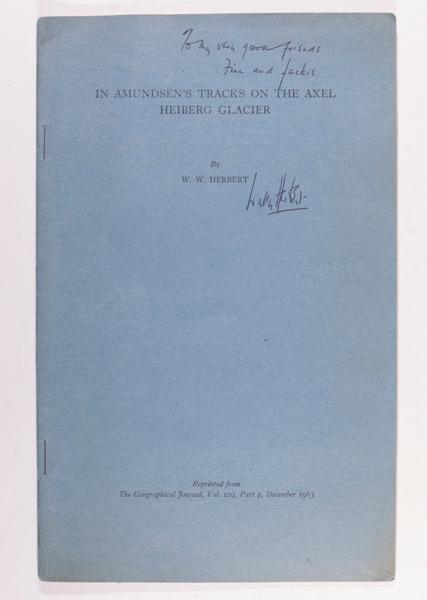
In Amundsen’s Tracks on the Axel Heibert Glacier: The Proceedings of the Royal Geographical Society and Monthly Record of Geography — Signed and inscribed by Wally Herbert
Herbert, W.W. London: Royal Geographic Society, December 1963. Volume 126, Part 4. 8vo 24.5cm. In Amundsen's Tracks. pp397-411 large fold-out color map. Publishers blue printed wrappers with black titles on front cover and stapled binding complete and in near fine condition. An informative publication of a presentation by W.W. Herbert to the Royal Geographic Society in December 1963 discussing his impressions of Amundsens journey along the Axel Heibert Glacier enroute to his conquest of the South Pole. Herbert followed the tracks of Amundsen and gives this most engaging and informative account while projecting the experience and what it must have been like in the context of Amundsens time fifty years earlier. With discussion notes by RGS President Sir Raymond Priestly at the rear. The leader of the British Trans-Arctic expedition was Walter William "Wally" Herbert (1934-2007) who made a 3800-mile surface crossing of the Arctic Ocean. This unique copy is signed and inscribed by Herbert on the front cover and also signed above his printed name on the large fold-out color map mounted at the rear of this publication.- $350
- $350
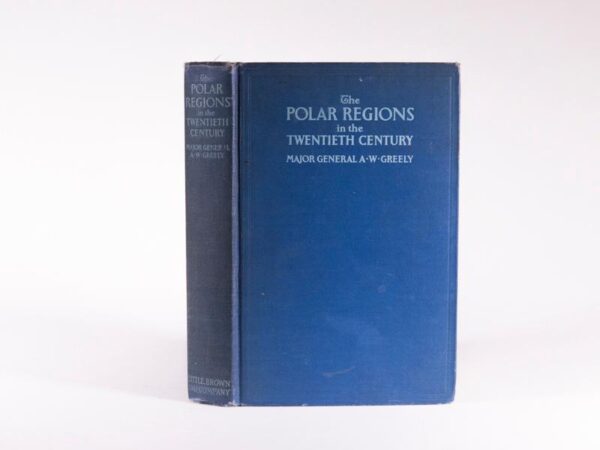
The Polar Regions in the Twentieth Century, Their Discovery and Industrial Evolution — Signed and Inscribed by A.W. Greely
Greely, A. W. Boston: Little, Brown, and Company, 1928. First edition. [x], 270pp. 27 photographic plates and illustrations, large fold-out color map. Index. Publishers blue cloth lettered in light blue. Interior with front hinge beginning to crack, so pages untrimmed, some wear to extremities, otherwise a very good copy. Signed and inscribed by A.W. Greely on the front free end leaf and including art two newspaper articles (obituaries) discussing his career and death. Arctic Bibliography 6116. An account of "the discovery and industrial evolution" of the Polar Regions by Civil War hero and famous polar explorer Adolphus W. Greely. In this informative overview, Greely discusses Arctic and Antarctic discoveries prior to 1800 to include the Northwest Passage, the Bering Sea, Arctic Alaska and Polar Canada, Hudsons Bay, the Kane Sea, Greenland, Iceland, the Asian Arctic, the Antarctic Regions and more. Greely was also responsible for supervising the laying thousands of miles of telegraph cable while in the U.S. Army Signal Corp.- $180
- $180

FROHLICHE WEIHNACHTEN!
BAUMGARTEN, FRTIZ CHRISTMAS. FROHLICHE WEIHNACHTEN! [by] Fritz Baumgarten. Leipzig: A. Anson ca 1925. Obl. 4to, cl. backed pict. bds, VG+. A Christmas picture book with Father Christmas, elves, little children and presents galore. Featuring 8 full page color illustrations and 8 full page illus. in blue line - each with 2 lines of text below.- $275
- $275
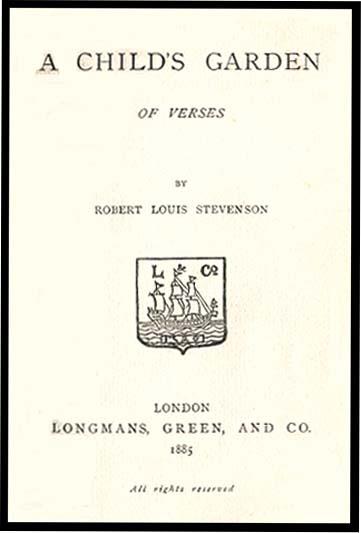
CHILD’S GARDEN OF VERSES
STEVENSON, ROBERT LOUIS STEVENSON,ROBERT LOUIS. A CHILD'S GARDEN OF VERSES. London: Longmans, Green & Co. 1885. 8vo, blue cloth stamped in gold, top edge gilt, x, 101p., small spot on front cover else near Fine. 1st ed. 1st printing (of 1000 copies). A nice copy of this most enduring book of poems for children.- $3,850
- $3,850
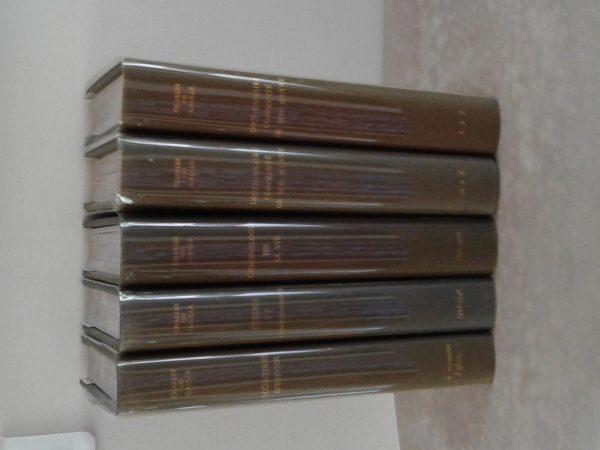
Oeuvres complètes
Général Charles de Gaulle uvres complètes du général de Gaulle. 13 tomes parus en trois collections. Mémoires de guerre. 3 Tomes (22 x 28,5 cm): Lappel (296 p). Lunité (360 pages), Le salut (372p). Plon, Club français des bibliophiles. 1966. Reluire toile enrichie de médaillons gravés par Albert de Jaeger, grand prix de Rome. Très nombreuses illustrations, cartes et photos NB et couleur. Rhodoid. Discours et messages, texte intégral. 5 tomes (22 x 28,5 cm). Pendant la guerre (582 p). Dans lattente (613 p). Avec le renouveau (456 p). Pour leffort (456 p). Vers le terme (462 p). Plon, Club français des bibliophiles. Edition tirée à 10000 exemplaires numérotés (n° 2582). 1972-1973. Chaque tome accompagné dun répertoire des illustrations et de repères chronologiques. Autres uvres. 5 Tomes (22 x 28,5 cm): Mémoires despoir. Etudes et correspondance. Chronologie de sa vie (dépliant couleur). Dictionnaire commenté de son uvre (2 tomes). Chaque tome 285 pages. Plon, club français des bibliophiles. 1974, Edition limitée à 20000 exemplaires, numérotée n° 2987. 1973. Nombreuses illustrations, Reluire toile enrichie de médaillons gravés par Albert de Jaeger. Nombreuses illustrations, cartes et photos NB et couleur. RhodoId. Lensemble en très bon état, quelques fentes sur les jaquettes rhodoïd. Prévoir frais denvoi en supplément. Les livres du lot ne seront pas vendus séparément.- $347
- $347
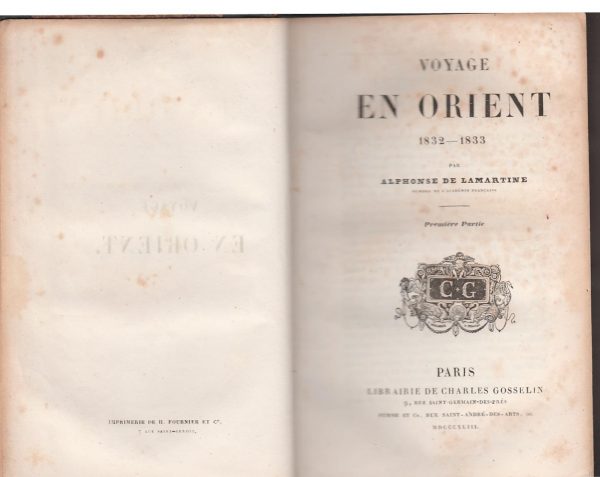
Voyage en Orient (1832-1833)
LAMARTINE Alphonse de 2 vol 568 et 574 pages, 17 X 11 cm Réédition de 1843, loriginale est 1835. Connu jusque-là comme poète Lamartine raconte le voyage quil effectue en Orient à partir de 1832 : il visite la Grèce, le Liban, va jusqu'au Saint-Sépulcre pour raffermir ses convictions religieuses, mais ce voyage sera fortement marqué par la mort de sa fille Julia, qui lui inspire le poème Gethsémani ou la Mort de Julia, texte qu'il intégrera par la suite dans son récit du Voyage en Orient. Dans une reliure dépoque à coin, cuir noir dos lisse à motifs floraux, plats marrons estampés à froid de motifs floraux. Ex-libris du bibliophile danois Torben Frimodt. Quelques rousseurs aux premières pages des deux volumes.- $208
- $208
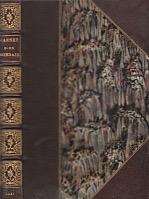
Carnet dun mondain
ETINCELLE 182 pages, 21 X 13 cm Edition originale dont il nest pas annoncé de grand papier, belle édition sur papier fort illustré de 5 chromo-typographies pleine page couleur, dont la couverture, et de 100 dessins in texte en noir et Blanc dAlexandre Fernandus, pseudonyme de François Avenet ou Ferdinand Avenet selon d'autres sources, peintre, dessinateur et illustrateur presse, ayant collaboré à « La Presse illustrée », supplément hebdomadaire illustré de « La Petite Presse ». Etincelle étant le pseudonyme dHenriette-Marie-Adelaïde Biard d'Aunet (1840-1897) femme de lettres, fille du peintre François-Auguste Biard et de Léonie Thévenot d'Aunet. Elle épouse, en 1863, le vicomte Jules-Louis-Antoine de Peyronny, employé au Crédit Foncier. Encore mariée, elle se marie en « secondes noces » à Londres, en 1885, avec l'avocat et richissime collectionneur « Baron » Lucien Double. Divorcée de son premier mariage en 1887, elle ne parvient pas à faire reconnaître le second et est abandonnée par le « Baron ». Dans une reliure demi-maroquin marron à coins bordés de filets dorés, dos à cinq nerfs ornés de filets dorés, caissons richement de motifs floraux, date en queue de dos, tête dorée, signet, les 2 plats de couverture conservés, il a été relié en fin de volume le dépliant publicitaire annonçant la publication de louvrage. Exemplaire en parfait état, sans aucune rousseur.- $347
- $347
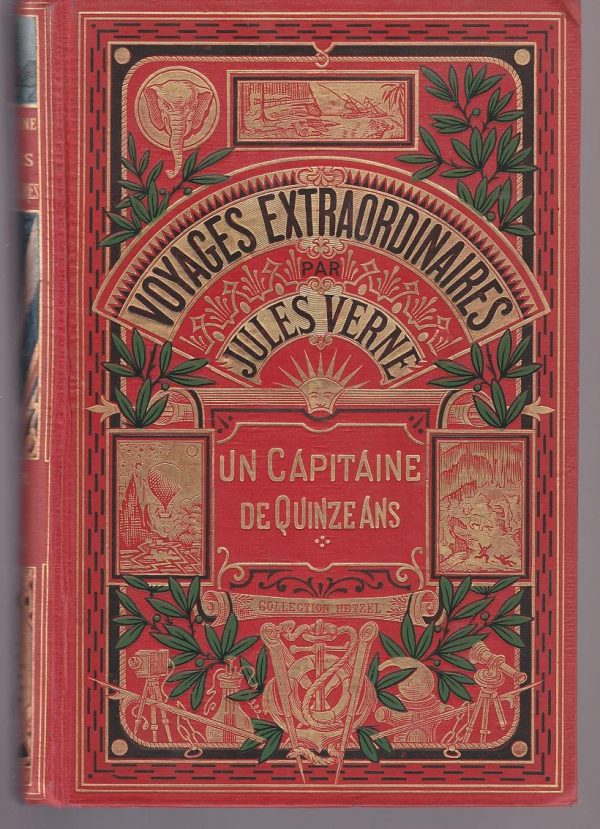
Un capitaine de 15 ans
VERNE Jules sans date (1917), 372 pages, 28 X 18 cm. Cartonnage un éléphant, titre dans la cartouche (Engel, non signé), second plat « Hachette et compagnie » à froid, 3 tranches dorées, illustrations en noir et blanc par Meyer. Exemplaire entièrement Hachette, en effet ce cartonnage tardif a été réemployé par Hachette lors du rachat en 1914 de la maison Hetzel et jusqu'en 1919, il y a donc des livres hybrides : cartonnage Hetzel reconnaissable au second plat de couverture/intérieur Hachette. Plat rutilant, aucune rousseur, gouttière parfaite, seul défaut minime : coin supérieur du premier plat imperceptiblement écrasé.- $578
- $578
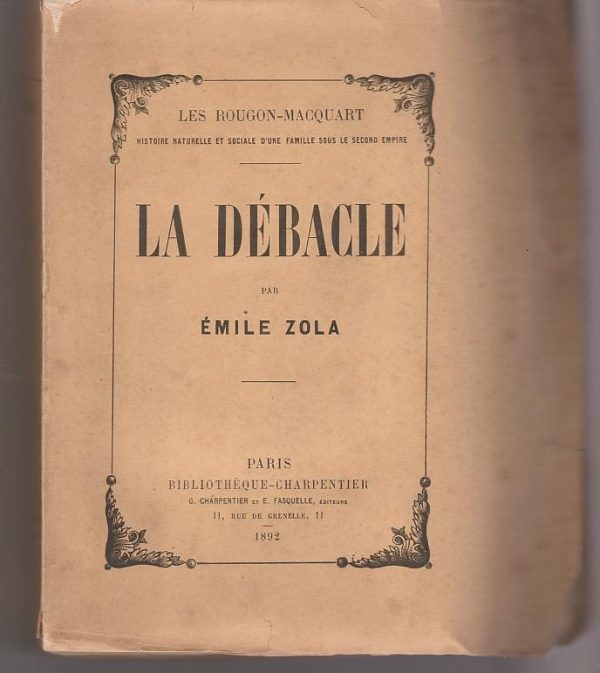
La débâcle
ZOLA Emile 638 pages, 19 X 15,5 cm Edition originale, un des 330 ex. numérotés sur Hollande (N° 185), il a aussi été tiré 33 Japon qui ne figurent pas au justificatif. Exemplaire à toutes marges, broché, tel que paru, très peu courant, la plupart des grands papiers ayant été reliés. Marges poussiéreuses, manque au coin inférieur du premier plat, bord du second plat effrangé (voir scans).- $1,734
- $1,734
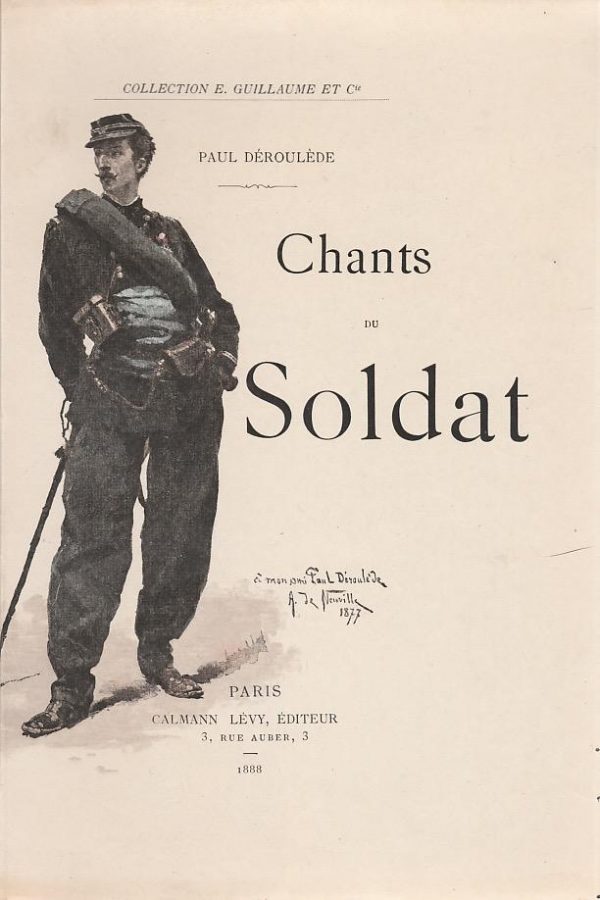
Chants du soldat
DÉROULÈDE Paul 328 pages, 24 X 15, 5 cm Edition originale, un des 100 ex. sur Japon seul grand papier. Illustration en couleurs et en noir et blanc des meilleurs illustrateurs militaires de lépoque (Neuville, Destailles, Boutigny, Girardet, etc.). Ces chants évoquent le désastre de 1870. Exemplaire non coupé, jamais ouvert, en strict état de neuf, le feuillet 313/314 est dérelié comme sur tous les ex. de luxe.- $462
- $462
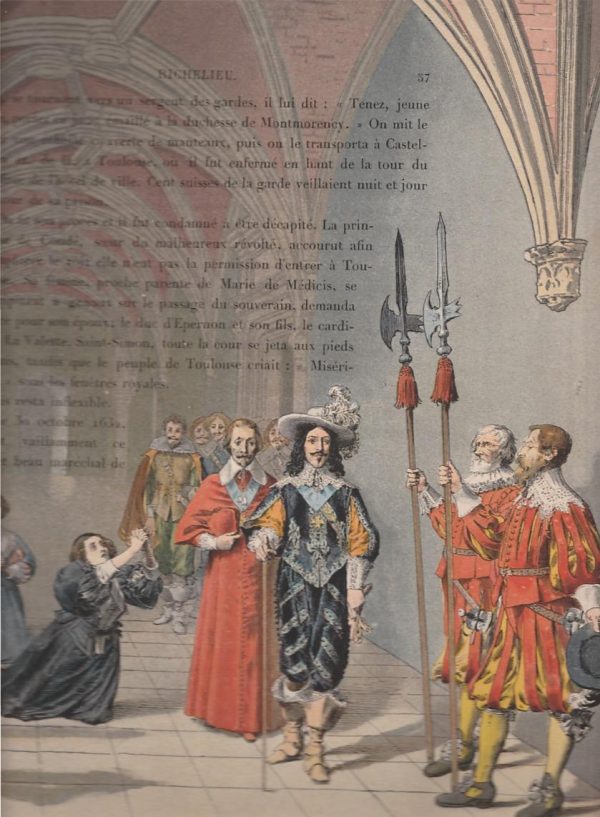
Richelieu illustré par Maurice LELOIR.
CAHU Théodore 84 pages, 37,5 X 30 cm Edition originale sur papier Odent, il a été tiré 75 Chine et 75 Japon. Percaline verte éditeur, premier plat polychrome représentant Richelieu en pied, toutes les pages sont montées sur onglet, 40 illustrations couleurs de Leloir dont cest lun des chef-duvre. Coin supérieur du premier plat écrasé, sinon exemplaire en excellent état.- $462
- $462
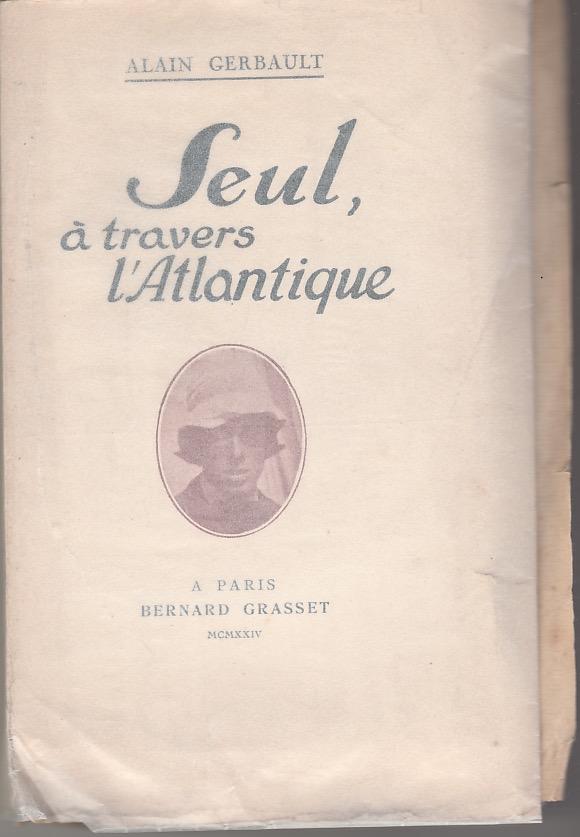
Seul à travers lAtlantique
GERBAULT Alain 224 pages, 21 X 13,5 cm Edition originale, le tirage est de 15 Japon, 30 Madagascar, 100 Hollande et 1100 vélin pur fil Lafuma, un des 100 Hollande (N° 63), illustré de 13 planches Hors Texte (plans de bateaux ou photographies). En 1923 Alain Gerbault (1893-1941) fut le premier à traverser l'Atlantique en solitaire d'est en ouest, ralliant en 101 jours Gibraltar à New York, puis il réalisa un tour du monde, toujours en solitaire, qui lui vaudra une renommée internationale. Exemplaire tel que paru, à toutes marges. Quelques marges poussiéreuses, sinon exemplaire en excellent état.- $231
- $231
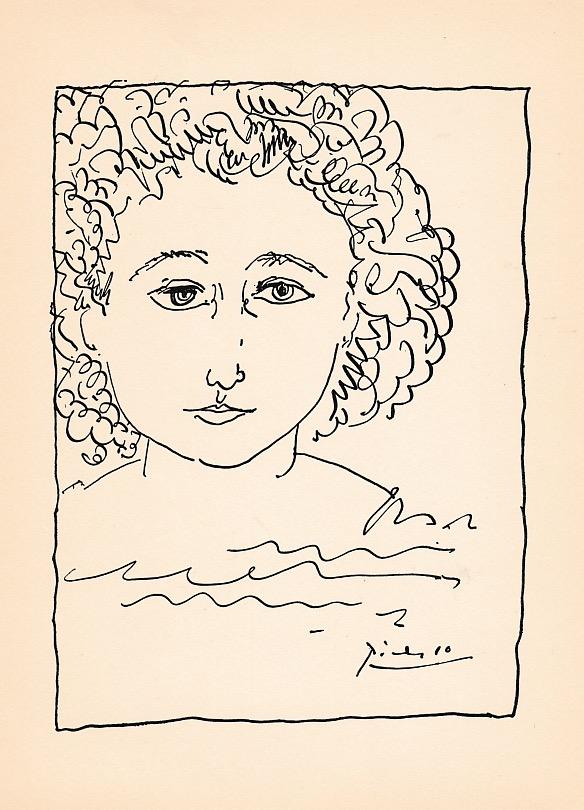
Images pour Ethel & Julius Rosenberg
COLLECTIF non paginé (10 feuillets imprimés au recto), 21 X 16 cm Edition originale tirée à petit nombre pour le deuxième anniversaire de lexécution des Rosenberg, les éditions du cercle dart étant très proches du Parti communiste français. Il existe quelques exemplaires numérotés à la plume, mais tout le tirage a été fait sur le même papier. Dans un étui papier à 3 volets et sous chemise, 9 illustrations, la première en couleur sur le rabat de létui par Erni, les huit autres de Laglenne, Léger, Lurçat, Picasso (2 planches, portraits de Ethel et Julius Rosenberg dont les originaux ont été offerts par Picasso aux enfants du couple), Pignon, Saint-Saens, Singier et 2 poèmes lun de Guillevic lautre, « Si nous mourrons », de Ethel Rosenberg. Le contre-plat de létui porte la signature autographe de Vladimir Pozner qui fut le responsable de cette édition, sur lillustration de Erni la célèbre signature autographe à la colombe à lencre rouge, signature autographe de Guillevic au bas de son poème. Fente en pied de la chemise, sinon exemplaire en parfait état. Maison 4 scans- $405
- $405
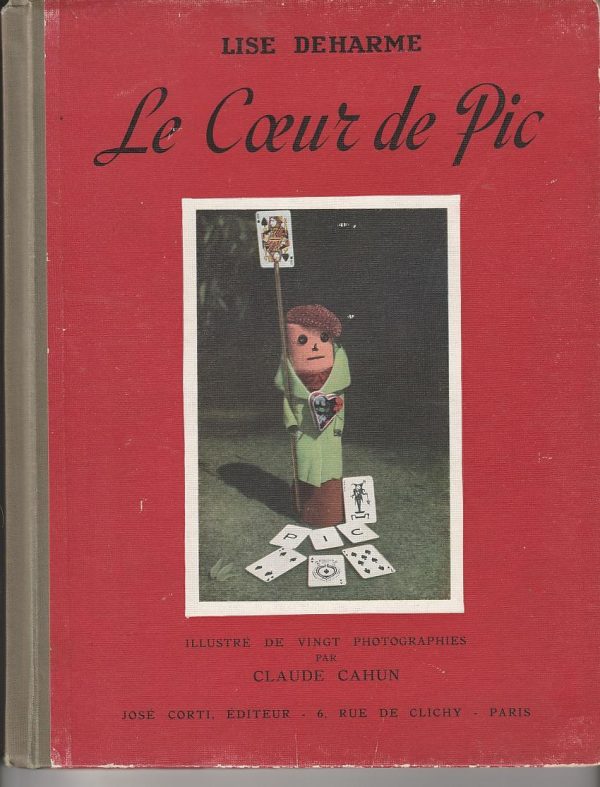
Le cur de Pic
CAHUN Claude (photographies) DEHARME Lise (Poèmes) non paginé (58 pages), 27,5 X 21,5 cm.Surréalisme, photographie, poésie, enfantina Edition originale dont il na pas été tiré de grands papiers, courte préface de Paul Eluard, 32 poèmes pour les enfants illustrés de 2 photomontages couleur sur les plats de couverture et de 20 photomontages noir et blanc de Claude Cahun. Rarissime édition originale, la plupart des exemplaires connus font partie du service de presse car louvrage neut strictement aucun succès et, à la parution, la photographe Claude Cahun était pratiquement inconnue. Dos toile gris-vert, plats rouges. Bords des plats frottés, « de mandy » ( ?) écrit dune graphie enfantine sur le second plat (voir scans), intérieur en parfait état.- $3,237
- $3,237
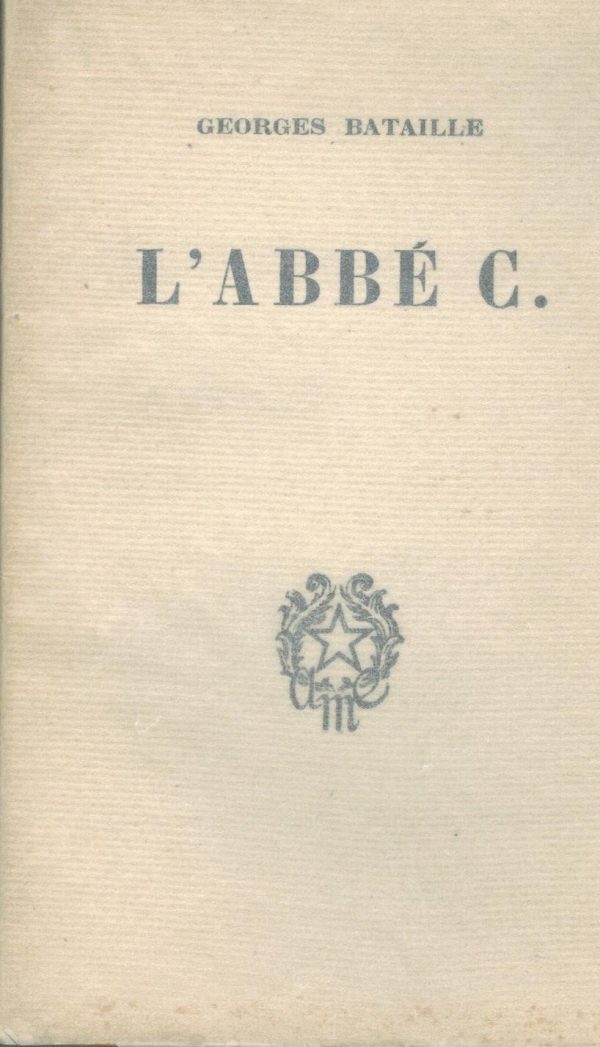
Labbé C.
BATAILLE Georges 232 pages, 18,5 X 11,5 cm Edition originale, un des 500 ex. sur Alfa des papeteries Navarre imprimé pour Les amis des éditions de Minuit, celui-ci non justifié. Ce texte a donné lieu à de nombreuses interprétations, notamment de la part de Pierre Klossowski : « Georges Bataille a ceci de commun avec Sade que chez lui la pornographie est une forme de la lutte de l'esprit contre la chair », ou Maurice Nadeau : « les goûts pervers et sacrilèges, une éthique sadienne du mal ». En très bon état.- $173
- $173
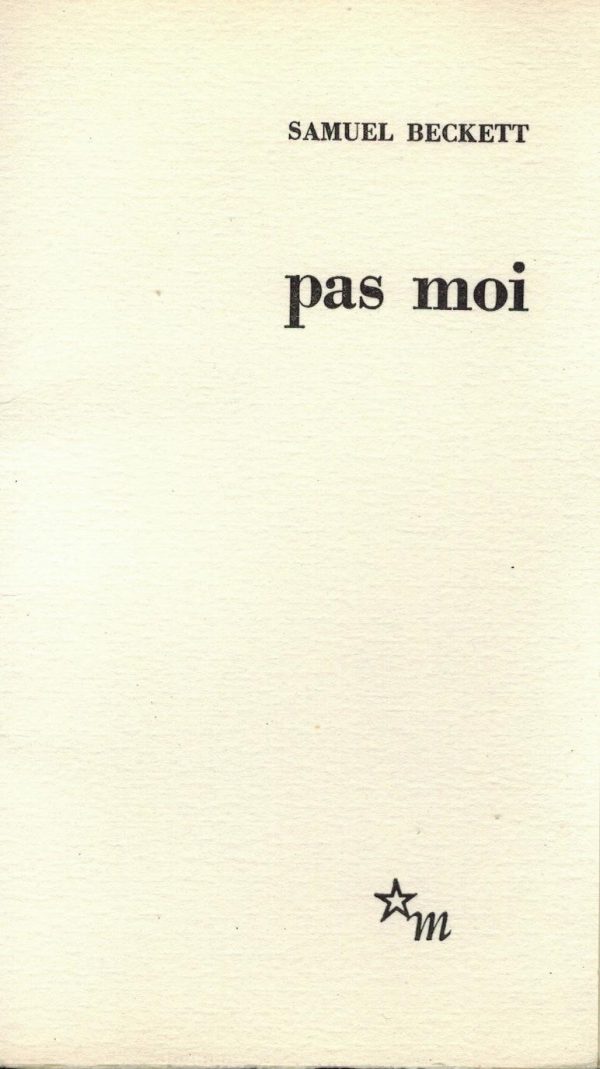
Pas moi
BECKETT Samuel 28 pages, 18 X 10 cm Edition originale, le tirage est de tête est de 92 exemplaires numérotés sur vélin supérieur et de « quelques exemplaires sur vélin supérieur marqués H.C. » notre exemplaire est un Hors-Commerce, dans son papier cristal dorigine. Envoi autographe signé et daté au peintre Robert Pikelny (Lodz 1904, Paris 1986) membre de lécole de Paris et à son épouse : « Pour Robert et Diane Pikelny, avec tous mes vux. Sam Beckett Paris 17.4.75. »- $1,387
- $1,387
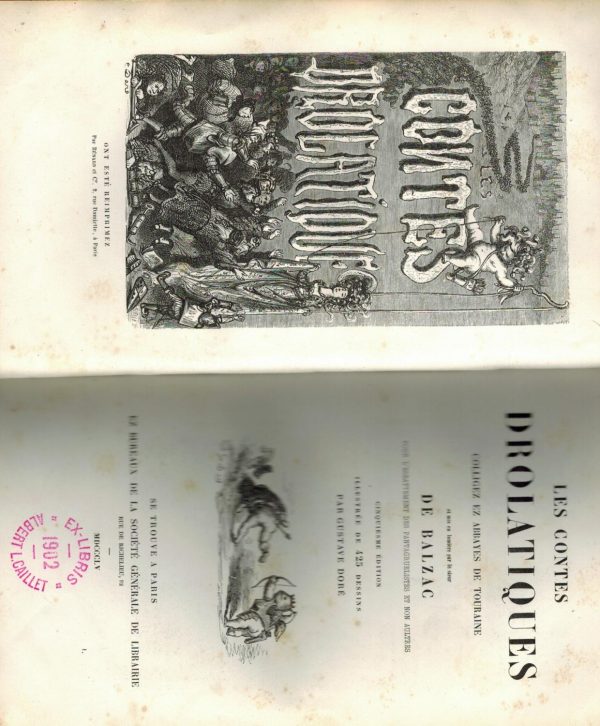
Les Contes drolatiques
BALZAC Honoré de, Illustré par DORÉ 614 pages, 21 X 14,5 cm Première édition illustrée et premier tirage des illustrations de Doré qui ont connu dinnombrables rééditions. Il sagit du tout premier tirage reconnaissable à lerreur de pagination de la page XX qui est répétée deux fois (voir scans), cette faute sera corrigée à la première réimpression. Une des plus belles illustrations de Doré. Dans une demi reliure cuir marron à 4 nerfs, petit manque de papier au pied du second plat (voir scan), des rousseurs comme presque toujours, tampon encre rouge ex-libris dAlbert L. Caillet, ingénieur civil qui à partir de 1908 se consacra uniquement à létude des sciences psychiques (source B.N.).- $578
- $578
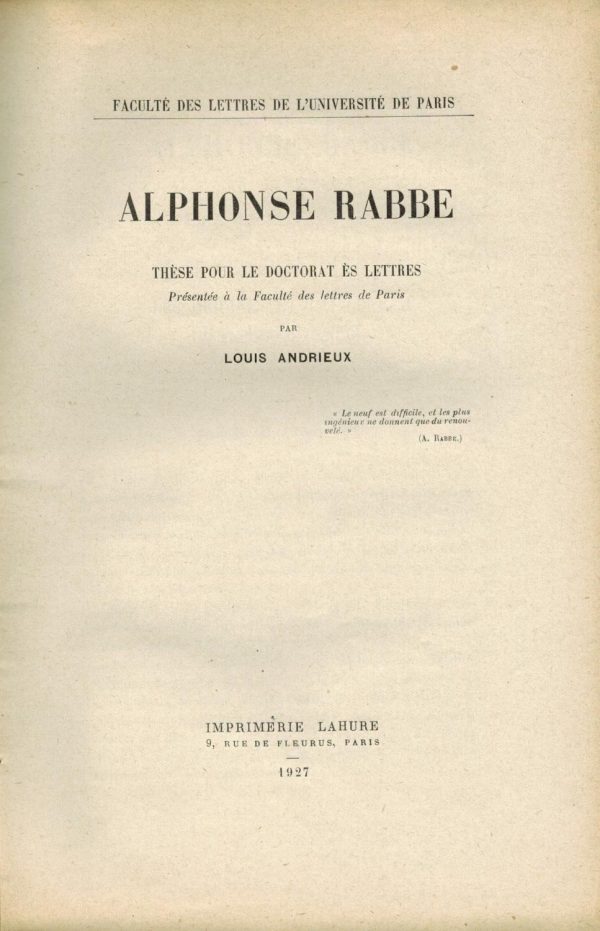
Alphonse Rabbe
ARAGON) ANDRIEU Louis 106 pages, 25 X 16,5 cm Edition originale de cette thèse pour le doctorat es-lettres tirée à petit nombre et soutenue à lâge de 87 ans par Louis Andrieu qui fut préfet de police de 1879 à 1881 et aussi le père naturel de Louis Aragon. Ami de Dumas, de Hugo et de Sainte-Beuve, journaliste, historien et écrivain, Alphonse Rabbe est à peu près oublié aujourdhui. Exemplaire en excellent état. Rare.- $139
- $139
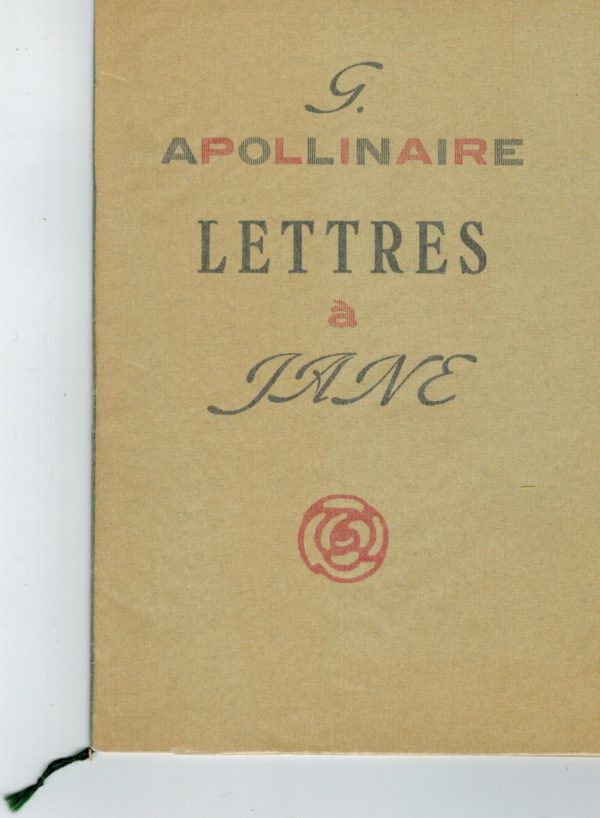
Lettres envoyées à Jane Mortier
APOLLINAIRE Guillaume 12 pages, 19 X 14 cm Edition originale tirée en tout à 51 ex. un des 40 sur vélin après 11 Madagascar, plaquette brochée au cordonnet, couverture typographique, justifiée et paraphée à lencre par léditeur Aelberts. « Jai vu les tranchées boches à 40 mètres et des obus éclater à quatre mètres. Entendu les balles fouetter lair au dessus de ma tête, regardé par les créneaux. Jai entendu aussi la mitrailleuse, mais de loin, cest tout à fait le moulin à café comme on dit. » En strict état de neuf.- $139
- $139
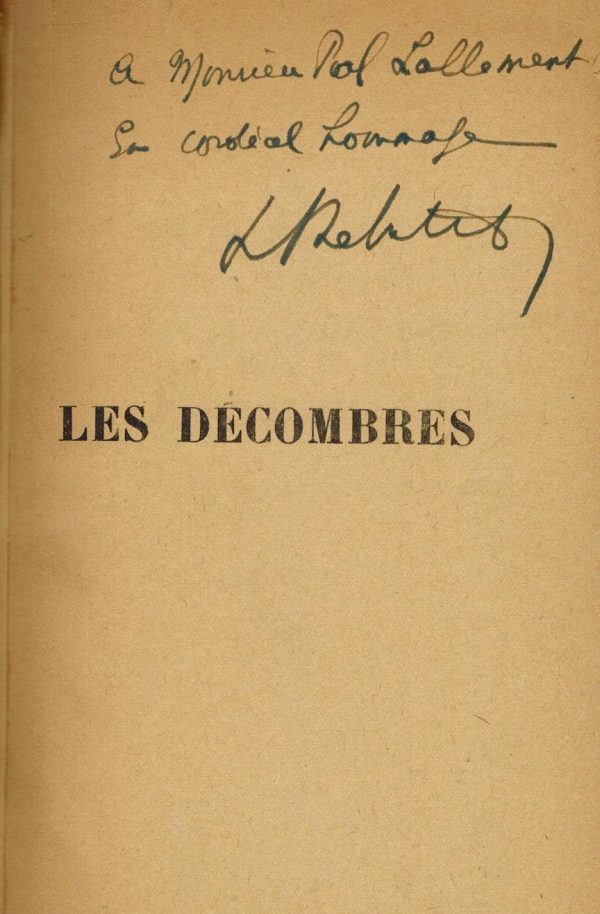
Les décombres
REBATET Lucien 672 pages, 19 X 12 cm Edition originale sur papier courant de ce pamphlet qui fut le plus gros succès de librairie pendant loccupation. Ce texte texte a été réédité avec un important appareil critique dans la collection Bouquins. Dans une reliure toile brique, étiquette pourpre, lettrage doré. Envoi au journaliste Pol Lallemand spécialiste des transports ferroviaires.- $405
- $405
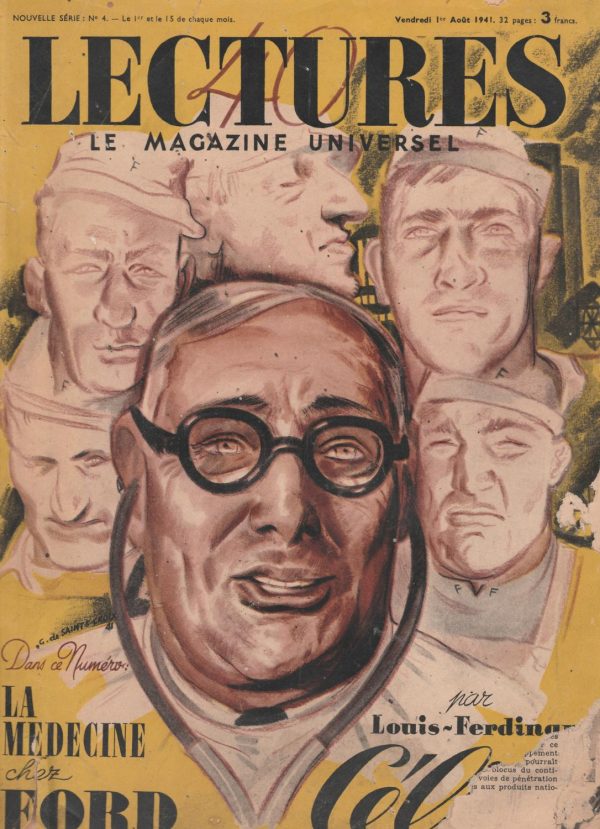
La médecine chez Ford
CÉLINE Louis-Ferdinand 32 pages, 30,5 X 21,5 cm.n Rarissime publication pendant loccupation de ce texte de Céline. Il sagit dune version légèrement modifiée du texte donné en 1928 sous le titre « A propos du service sanitaire des usines Ford à Détroit » dans le bulletin N°10 de la Société de médecine de Paris. Etat moyen, petits manques aux coins inférieurs (voir scans) naffectant pas le texte qui sétend sur quatre pages. Pratiquement introuvable.- $208
- $208
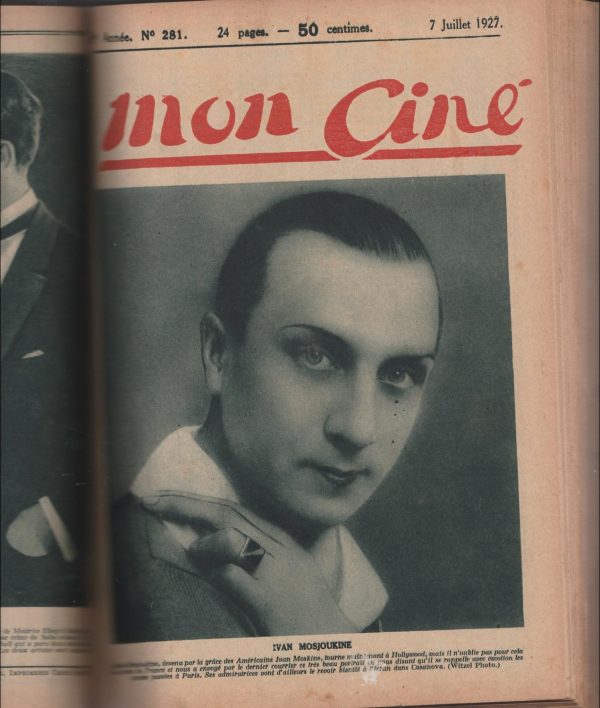
Mon Ciné, Année 1927 complète
COLLECTIF Année 1927 complète, du N°255 au N°306, 52 N° de 24 pages (1248 pp.), 26X 18 cm. Chaque N° est illustré en première et en quatrième de couverture dun portrait de vedette. Mon Ciné, très abondamment illustré, traitait de lactualité du cinéma, des sorties jusquaux petits potins relatifs aux vedettes. Il ne faut pas oublier que plus de 90% des films évoqués ici ont disparus, et les noms de la plupart des vedettes ne nous disent plus rien. Dans une demi reliure amateur, dos cuir bleu, plats moucheté.- $173
- $173
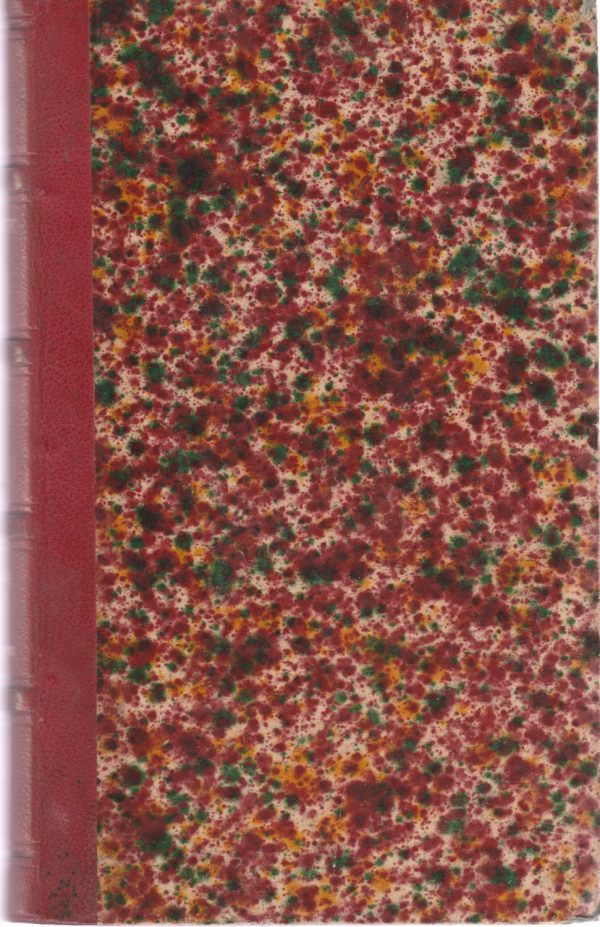
uvres, avec des éclaircissement et des notices historiques
SCOTT Walter 32 volumes, 21 X 13 cm Première édition en 32 volumes des uvres de Walter Scott (1771-1832), publiées en France de son vivant, dans la traduction de Defaucompret. T1 (46 et 2 (464 et 436 pp.) : Romans poétiques et poésies diverses. T3 (532 pp.) : Waverley. T4 (522pp.) : Guy Mannering. T5 (548 pp.) : Lantiquaire. T6 (508 pp.) : Rob-Roy. T7 (502 pp.) : Les puritains dEcosse. T8 (598 pp.) : La prison dEdimbourg. T9 (424 pp.) : La fiancée de Lammermoor. T10 (456 pp.) : Lofficier de fortune. T11 (536 pp.) : Ivanohe. T12 (512 pp.) : Le monastère. T13 (560 pp.) : Labbé, suite du Monastère. T14 (592 pp.) : Kenilworth. T 15 (604 pp.) : Le pirate. T16 (626 pp.) : Les aventures de Nigel. T17 et T18 (424 et 446pp.) : Peveril du Pic. T19 (610 pp.) Quentin Durward. T20 (586 pp.) : Les eaux de Saint Ronan. T21 (572 pp.) : Redgauntlet. T22 (424 pp.) : Les fiances. T23 (412 pp.) : Richard en Palestine. T24 (576 pp.) : Woodstock. T25 (484 pp.) : Les chroniques de la Canongate. T26 (560 pp.) : La jolie fille de Perth. T27 (536 pp.) : Charles le téméraire. T28, 29, 30 (426, 502 et 548 pp.) : Histoire dEcosse. T 31 (470 pp.) : Robert comte de Paris. T32 (234 et 324 pp. 2 textes reliés en un volume) : Le château périlleux suivi de Histoire de la sorcellerie et de la démonologie. Rarissime ensemble complet des 32 volumes tels que publiés, dans une demi reliure uniforme, dos cuir rouge à 4 nerfs, plats papier moucheté rouge, gardes papier moucheté bleu. Rares rousseurs, quelques cahiers jaunis (Furne, éditeur populaire, utilisait parfois des papiers différents dans un même volume), mais le tout est en très bon état. Prévoir frais de port.- $2,312
- $2,312
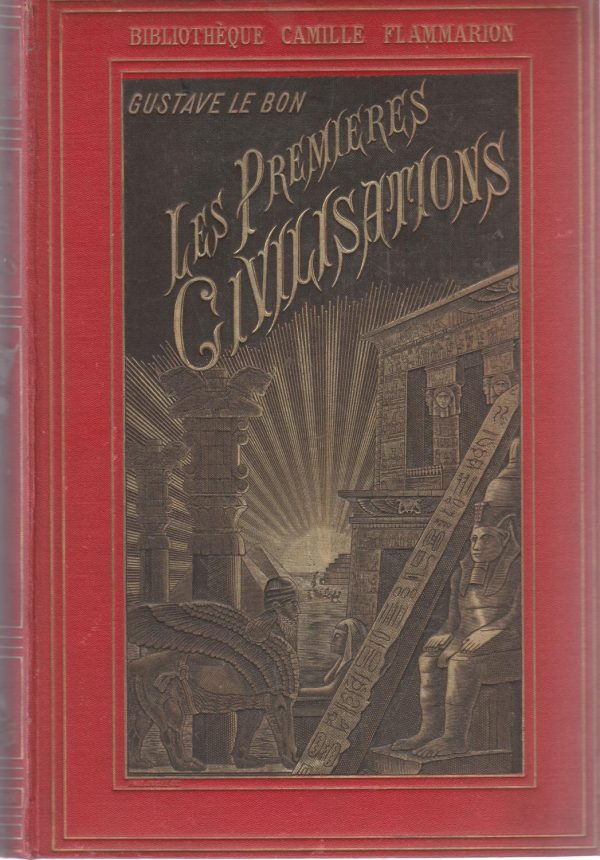
Les premières civilisations
LE BON Gustave 820 pages, 27,5 X 18,5 cm Edition originale en volume, le texte avait été publié sous forme de fascicules lannée précédente. Ouvrage illustré de 443 figures, dont 333 reproductions, 41 restitutions, 60 photogravures pleine page et 9 photographies hors-texte daprès nature sous serpente. Cartonnage illustré éditeur rutilant, percaline rouge, dos orné dune colonne égyptienne et dun sphinx dorés (voir scans), trois tranches dorées, gouttière parfaite. Rares rousseurs.- $231
- $231
